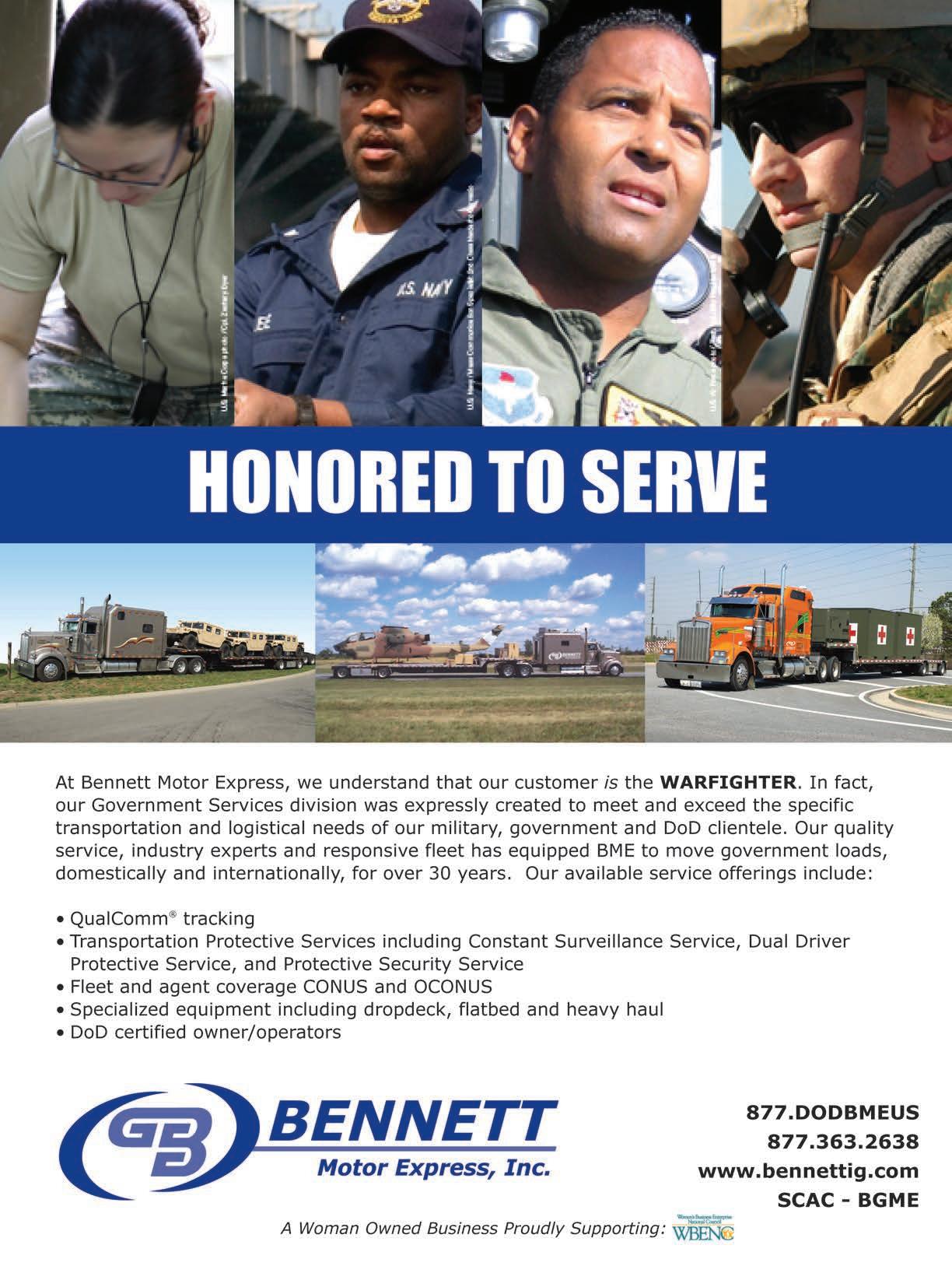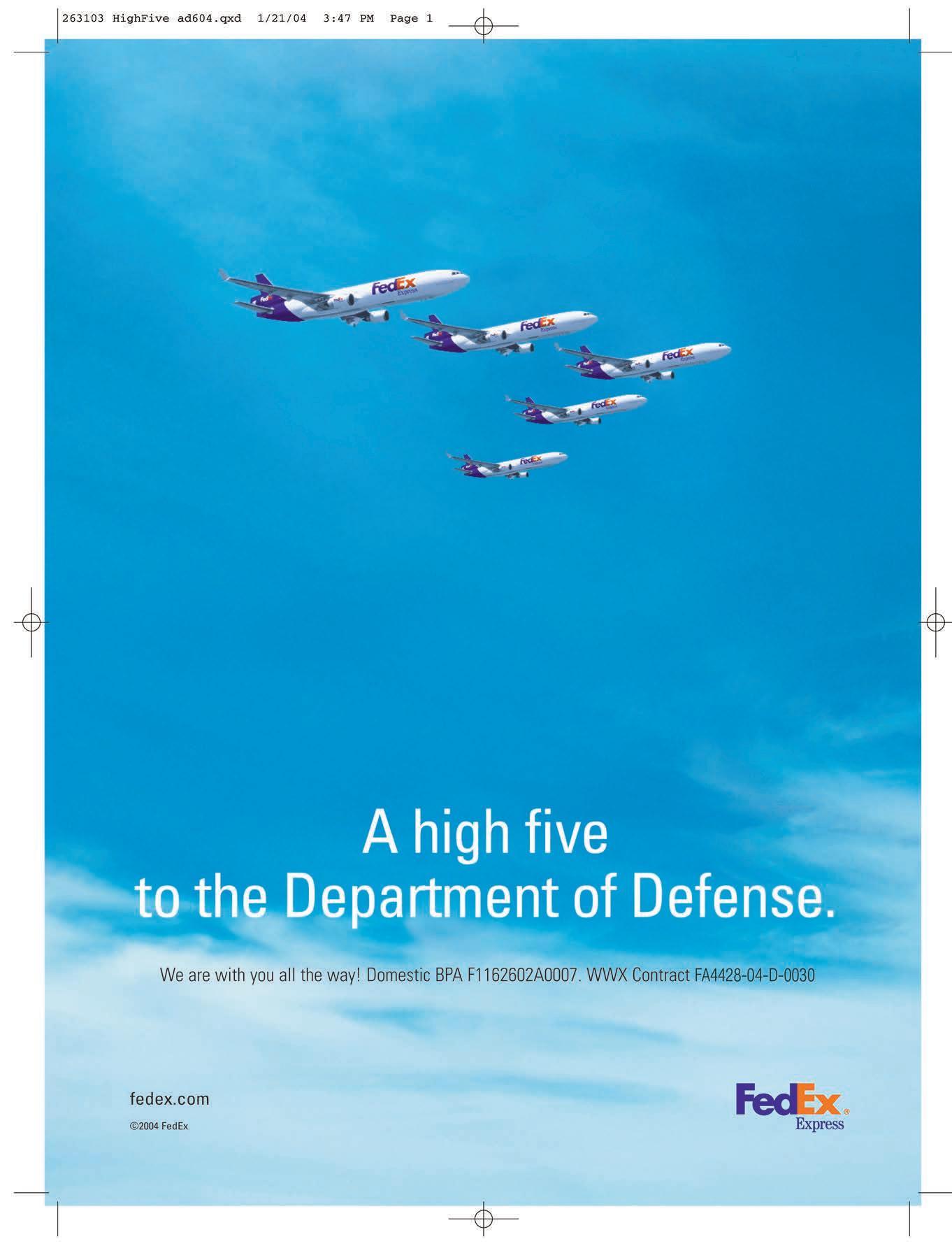

FORWARD,MARCH.
Howdo essentials likefood,fueland equipmentfind theirwayto a constantlymobile,globallydispersed military? MaerskLine,Limitedprovidesunparalleled reach andsupplychainvisibilitytohelpsustainU.S. forceswherevertheyaretoday,andwhereverthey maybecalledto gotomorrow.
Readinessisessential.Seeyour goodsthroughfromfactoryto foxholewithMaerskLine,Limited.
OurIntegratedDefenseLogisticscapabilitiesassure long-haul,last-mile deliverythatcanbetracked fromendtoend.Withaglobalnetworkofdedicated employees andagents,weoffera uniqueleveloflocal knowledge andsupportwhetheryouneedexpert consultationoron-the-groundresults.
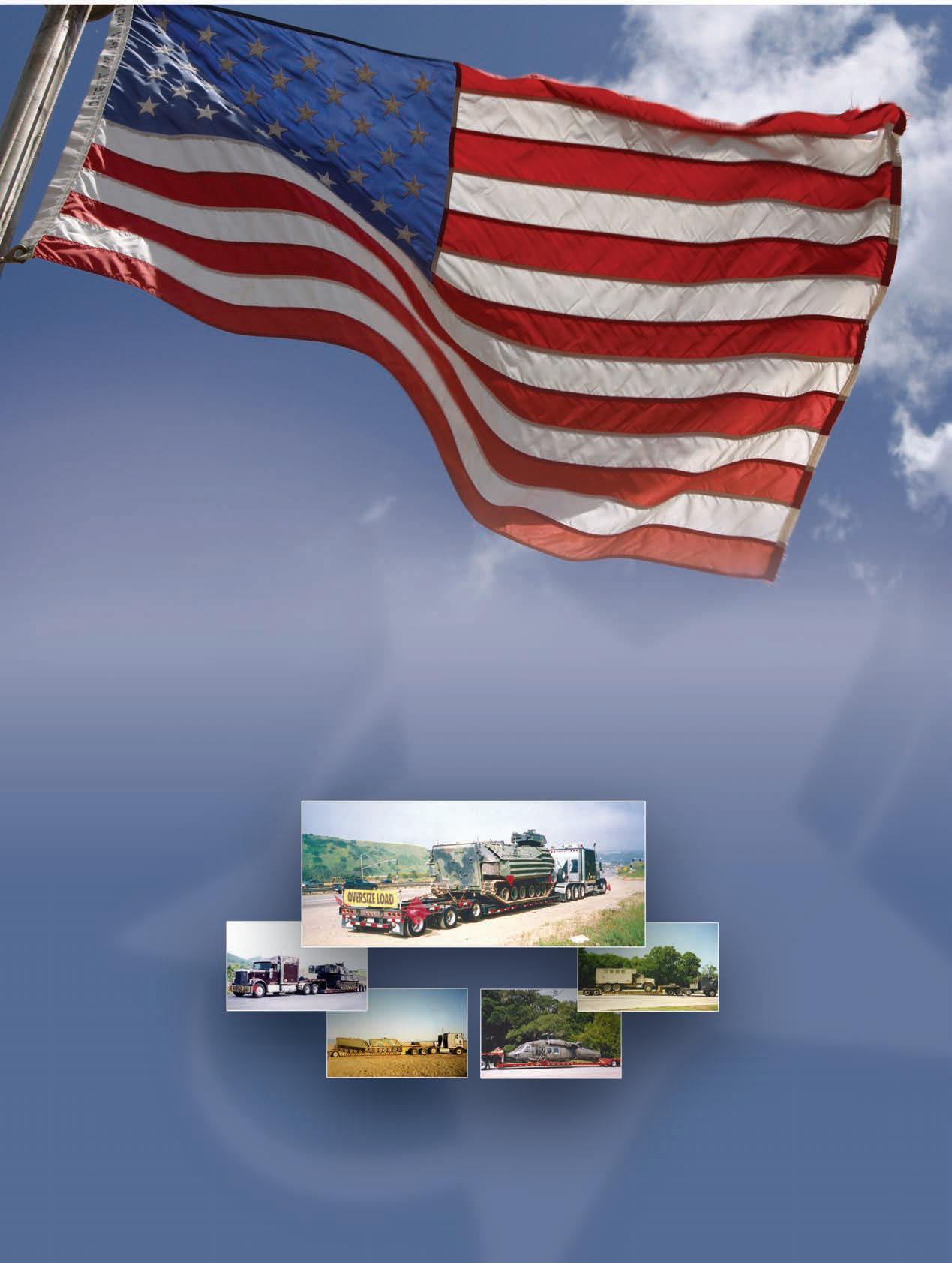
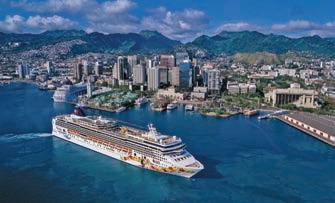


August 2007 • Vol 63, No. 4
PUBLISHER LTG Ken Wykle, USA (Ret.)
EDITOR
Kent N. Gourdin
MANAGING EDITOR
Karen Schmitt | karen@ndtahq.com
CONTRIBUTING EDITOR
Denny Edwards
CIRCULATION MANAGER
Leah Ashe
PUBLISHING OFFICE NDTA
50 South Pickett Street, Suite 220 Alexandria, VA 22304-7296 703-751-5011 • F 703-823-8761
PRODUCTION MANAGER
Margaret Howard
GRAPHIC DESIGN
Debbie Bretches
ADVERTISING ACCOUNT EXECUTIVE
Don Perkins
ADVERTISING & PRODUCTION
Carden Jennings Publishing Co., Ltd. Custom Publishing Division 375 Greenbrier Drive, Suite 100 Charlottesville, VA 22901 434-817-2000, x143 • F 434-817-2020
Defense Transportation Journal (ISSN 0011-7625) is published bimonthly by the National Defense Transportation Association, a non-profit research and educational organization; 50 South Pickett Street, Suite 220, Alexandria, VA 223047296, 703-751-5011. Copyright by NDTA. Periodicals postage paid at Alexandria, Virginia, and at additional mailing offices.
SUBSCRIPTION RATES: One year (six issues)
POSTMASTER: Send
EDITORIAL REVIEW BOARD AND EDITORIAL OBJECTIVES
Dr James M Daley, Dean, Helzberg School of Management, Rockhurst University, Kansas City, MO
Dr Kent N Gourdin, Director, Global Logistics and Transportation Program, College of Charleston
Maj Gen John E Griffith, USAF (Ret ), Transportation Logistics Consultant
Richard H Hinchcliff, Consultant
Brig Gen Malcolm P Hooker, USAF (Ret ), Member, Board of Directors, NDTA
Dr Joseph G Mattingly, Jr , R.H. Smith School of Business, University of Maryland
Prof Gary S Misch, US Naval War College (Ret )
Lt Col Anne T Peck, USAF (Ret )
Dr Richard F Poist, Jr , Professor, Transportation and Logistics, Iowa State University
MG Harold I Small, USA (Ret ), Consultant
COL Joseph A Torsani, Jr , USA (Ret )
Dr David Vellenga, Director, Carl A. Gerstacker Liberal Arts Institute for Professional Management, Professor of Economics and Management, Albion College
EDITORIAL OBJECTIVES
The editorial objectives of the Defense Transportation Journal are to advance knowledge and science in defense transportation and the partnership between the commercial transportation industry and the government transporter. DTJ stimulates thought and effort in the areas of defense transportation, logistics, and distribution by providing readers with:
• News and information about defense transportation issues
• New theories or techniques
• Information on research programs
• Creative views and syntheses of new concepts
• Articles in subject areas that have significant current impact on thought and practice in defense transportation
• Reports on NDTA Chapters
EDITORIAL POLICY
The Defense Transportation Journal is designed as a forum for current research, opinion, and identification of trends in defense transportation. The opinions expressed are those of the authors and not necessarily of the Editors, the Editorial Review Board, or NDTA.
EDITORIAL CONTENT
For correspondence including feature manuscripts and books for review, write:
Dr Kent N . Gourdin, Editor, DTJ Director of the Global Logistics & Transportation Program, College of Charleston, Charleston, SC 843-953-5327 • F 843-953-5697 gourdink@email.cofc.edu
Government, Corporate, NDTA and Chapter News, Almanac Input, Mini-features, and all other departments, send news and photos to:
Ms Karen Schmitt, Managing Editor, DTJ NDTA
50 South Pickett Street, Suite 220 Alexandria, VA 22304-7296 703-751-5011 • F 703-823-8761 karen@ndtahq.com

A-35
A Better Defense Travel System We Can Help
Ms . Lori Leffler, A-35 Chair
Manager, US Government Sales, The Hertz Corporation
Most military and government A-35ers probably don’t realize how much they can actually affect the Passenger Travel Industry. When flying, renting a car, or staying out of town on business travel, their payment rates are determined through established processes and programs. When they book arrangements, they utilize technology that has been developed and endorsed over the years. As the upcoming leaders of NDTA, we need to consider how we can make a positive impact to improve the system for future travelers.
Remember when you last called a travel agent or went online to schedule a flight? What were your expectations, what was positive about the experience, and what could have been done differently? If the service was good, the program managers need to know. They also need your input if you felt that something was lacking. In today’s passenger travel world, it’s the senior government managers who review programs and make the decisions. Lend your voice—share your views! Management needs your ideas and recommendations.
Did you know that as an A-35er in military or government service you are entitled to discounts and benefits for official travel that are much more lucrative than those available to the general public or corporate America. You can reserve airline seats, hotel rooms, and rental cars at major discounts, and you can drive rental cars at a younger age than non-military and government customers—and often
CHANGE:
Please make this revision to your copy of the NDTA 2007 Almanac .
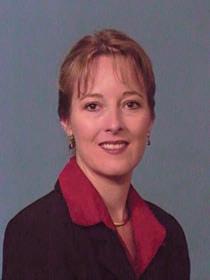
with complimentary upgrades. Some of these benefits are even available when you are on personal travel!
As an A-35er, I urge you to become more involved. It’s not a prerequisite that you are employed by the federal government or that you are an active duty member. ALL A-35ers have insight to share that can assist government travelers. We’re versed in technology and customer service and we have experience. And we have ideas! If you are interested in being involved in a committee that can make a positive impact on the government travel programs of tomorrow, please contact me. Better yet, let me know when we are together in Charleston at the NDTA Forum!
The NDTA Forum Web Site (www. ndtahq.com/forum) has been launched so you can check the Schedule Link for A-35 activities. The Annual A-35 Meeting & Breakfast (9/17) provides us an opportunity to interact with fellow A-35ers and NDTA leaders in order to learn and pose questions. Our A-35 Panel Discussion (9/17) will be back by popular demand so that A-35ers can share personal career experiences. A Mentoring Session (9/17) will share strategies for implementing a mentoring program in your chapter and pair you with a mentor to assist with your professional development. Of course, the Duck Race, a favorite with all Forum Attendees, will again be a major part of our scholarship fundraising in Charleston. Remember, you can Adopta-Duck online or help us sell Duck Adoptions on-site. DTJ

As of June 2007: ITLT Solutions, Inc Regency One Building 9485 Regency Square Boulevard Suite 460 Jacksonville, FL 32225 change

ABrave New World for Airline Travel
Dr . Kent N . Gourdin, Editor DTJ Director, Global Logistics and Transportation Program College of Charleston
s I was thinking about the theme for this DTJ (the Passenger Travel issue), it occurred to me that these are interesting times for our airline industry. Several of the legacy airlines that were in Chapter 11 bankruptcy are emerging leaner and meaner than when they went in; the competitive spirit is alive and well with a number of new carriers entering various markets to pursue perceived opportunities; and there are more customers flying than ever before.
Unfortunately, surviving in today’s volatile aviation industry means firms must do the impossible: keep customers happy while paring costs to the bone. A recent trip from South Carolina to California brought this new reality home to me when I asked for a pillow, only to be told that there were no more. The cost of cleaning, storing (both on the ground and in the air), and handling has become too much for the company to sustain. Food service is increasingly spartan as well; in fact, the only domestic full-meal service now provided in coach by this particular carrier is on flights from the East Coast to Hawaii and Alaska. However, we DID get drinks, a snack, and entertainment.
Some of the newer carriers, however, have escalated cost control to an even higher level. One will provide you a pillow . . . for $15. Checking a bag costs $5. Since there are no preassigned seats, avoiding a middle seat means paying $10 to board before everyone else. Bottled water is available for $2, and don’t even think about bringing your own food and drink on board; the airline does not allow it. In fact, labor costs are kept low by paying flight attendants a very low hourly rate, but allowing them to keep 10 percent of everything they sell in flight. While a number of European carriers have been quite successful with what has come to be known as an ultra low-cost strategy, that business model is just now appearing in America.
At some level, we, as passengers, are being forced to think about what is really important to us when we fly. There is some appeal to paying only for those items you want, rather than essentially being forced to support amenities you may have little need for. However, some of you may be reading this and wondering where it all stops? No pillows? No water? What next . . . paying to use the lavatory?
The trip to California proved enlightening to me in this very regard. We had a mid-afternoon departure from San Francisco that gave us approximately one hour to connect with our next flight to Charleston (which was, of course, the last one of the day). Once we were boarded and ready to go, a maintenance problem surfaced that delayed departure. Now, one of the things I have always hated is the “15 minute slow-leak,” which occurs when carrier employees periodically announce that the problem will be fixed in 15 minutes. On
this flight, we were spared that. When it became obvious that the airplane could not be fixed in sufficient time to guarantee passengers making their connections (after roughly 45 minutes), the Captain announced that everyone would be put up for the night at the hub airport, given meal vouchers, and rebooked to their final destination the following morning. Now don’t get me wrong. My first inclination was to rail at the heavens, but the reality is that airplanes break. Upon arrival at the hub, employees met us with the vouchers and detailed instructions on what to do. The airline had kept us informed, taken steps to accommodate us as soon as it became obvious connections would be missed, and ultimately got us to where we were going safe and sound. (Of course, the free drinks weren’t bad either.) In other words, they made the best of a bad situation.
What I saw on this trip was an airline concerned with safety and the well-being of its passengers—two things of paramount importance to me. While I have, over the years, never doubted the former, I have, at times, been disappointed in the lack of customer sensitivity. I’m happy to see that things are changing for the better. DTJ
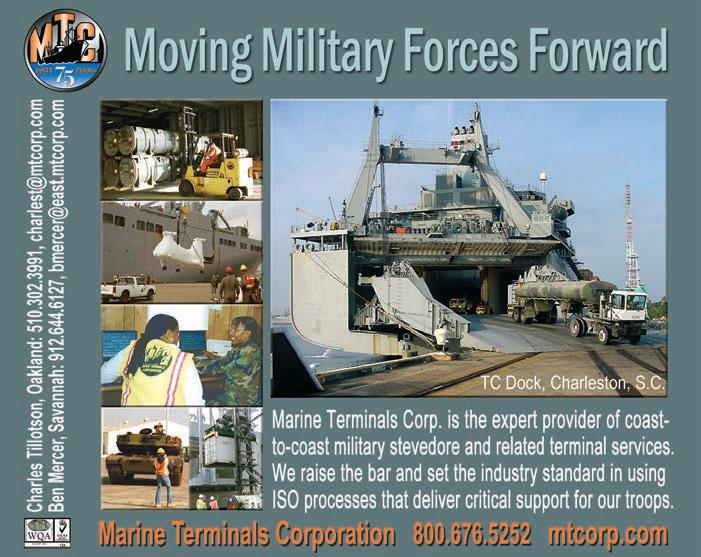
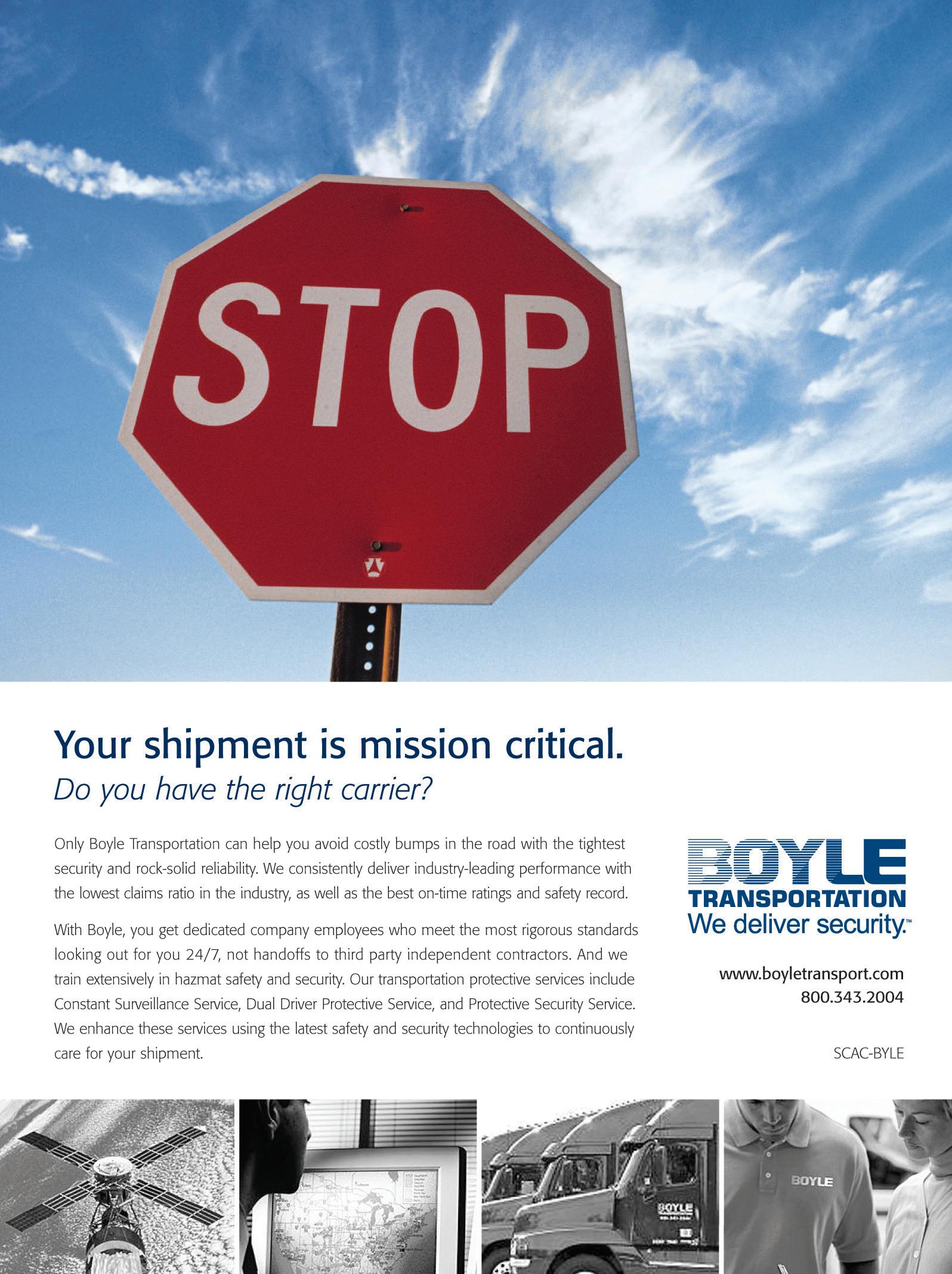
PRESIDENT’S CORNER
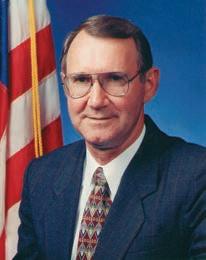
WLTG Ken Wykle, USA (Ret .) NDTA President
e are busy at NDTA Headquarters preparing for the Forum in Charleston. Our focus is on many areas, including professional sessions, partnership, and streamlined administration. One area we take for granted is travel. Our focus tends to be on transportation modes, distribution, and the other functions necessary to move freight. We tend to overlook the various systems that support the traveler. This issue of the DTJ is primarily about travel.
Most government employees and military personnel attending the Forum will travel by air, using the government’s GSA City Pairs program. Under this program, commercial passenger airlines bid for government travel by submitting rates between any two pairs of cities. For example, they quote a rate to the government for passengers traveling between Washington, DC and Atlanta; that rate is good for one year from the effective date of the contract. The government traveler has a lot of flexibility compared to industry counter parts—the rate is honored regardless of when a reservation is made, and it applies to any available economy class seat including the last seat available. Airlines are starting to challenge some provisions in the GSA City Pairs contract and are asking for changes. The government has resisted. With full planes on many routes, smaller planes, and less total planes in
their fleets, many scheduled flights are filled. Some carriers are considering dropping out of the contract—not bidding in the future. GSA and the government (DOD as the largest user of this contract) should work with the airlines to find solutions to industry issues or risk “killing” the golden goose.
Many Forum attendees will also rent a car while in Charleston. The government rental car agreement is the best in the industry—better than a rental car company’s best corporate client agreement. Each of approximately 20 participating car rental companies provides ceiling rates that prevent the government traveler from being “gouged” when demands are high. Each company adjusts rates below the ceiling rate to compete for business. For one daily rate, government travelers receive the loss and damage waiver and maximum liability insurance up to $300,000. Additionally, the government agreement lowers the normal age restriction on rentals from 25 years to 18. These are a few of the benefits.
Travelers require a place to stay. Hotels participate in lodging programs designed for the government traveler offering rates at or below per diem. Programs include Lodging Success Program (LSP), using locally negotiated rates at select locations; the Navy Elite Program, which books Navy Bachelor Quarter (BQ) rooms and,
when not available, permits Navy travelers to book commercial lodging; and the FedRooms Program (formerly the Federal Premier Lodging Program), operated as a Business Process Outsource (BPO) by Carlson Wagonlit Travel. The challenge is to bring these programs together under one “umbrella” for the greatest benefit to the majority of travelers, hotels, and government agencies, who would enjoy increased buying power.
Traditionally, government travelers went to their base travel office to make flight, hotel, and rental car arrangements. The Defense Travel System (DTS) has changed the process by implementing a fully integrated, self-booking, electronic, end-toend financial management system that automates temporary duty travel for the DOD. Professional travel agencies process DTS travel requests electronically, but assist when necessary. The system also provides for submitting the expense report and being paid for authorized expenses incurred during travel. DTS is available to support about 95 percent of all DOD business travel.
Naturally, implementation has posed challenges. I will not recount the many comments except to say that users I have spoken with indicate that the system is not user friendly—it takes a lot of time if you’re not familiar with the process. If your supervisor isn’t proficient in the system or responsive to your needs, a travel agent may be contacted who may not have the necessary background information for that particular trip. The DTS has addressed many user concerns and has recently released a comprehensive “Reservation Refresh Module” that brings a number of enhancements to the DTS, such as

International C-TPAT (Customs Trade Partnership Against Terrorism) shippers transporting cargo into the US are required to use high security seals per the US Customs and Border Protection (CBP) C-TPAT program. High security seals must be able to delay and/or make obvious any attempt at unauthorized entry into a trailer or container. These seals typically are steel bolt seals or heavy cable seals. The qualifications that these seals must meet have been established and are tested and verified by a hierarchy of reputable organizations and a system that ensures product and manufacturer integrity.
The new international standard driving the C-TPAT shipping community and the global security seal industry today is ISO/PAS 17712:2006 Mechanical Seal Standard for Freight Containers. ISO/ PAS 17712:2006 guidelines stipulate that seals undergo tensile, shear, bending, and impact resistance tests using a standard set of procedures developed by government, industry, and association technical committees, subcommittees, and working groups. CBP requires that a high security seal meet or exceed the results required in each of these mechanical tests in order to earn the high security rating per ISO/PAS 17712:2006 performance standards and to meet C-TPAT compliance.
This standard also requires a seal manufacturer to consistently meet three ISO process, quality, and product performance requirements:
1. The seal manufacturer’s production facilities are ISO 9001:2000 compliant;
CARGO SEALS REQUIRE Documentation TO PASS C-TPAT Review
ISO Chain of Accountability
Backs Products and Processes for Security Seals
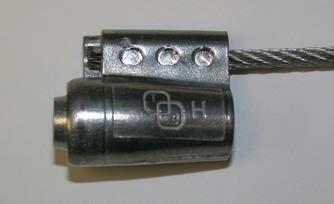
Seals that pass the testing for high security classification must be marked with an “H” by the manufacturer, who must also be identified. Shippers will need to have test result documentation available in the event of a C-TPAT audit.
2. The seal manufacturer complies with ISO/PAS 17712:2006, Annex A, Seal Manufacturers’ Best Practices;
3. The seal manufacturer submits an ISO/ IEC 17025:2005–Accredited Lab Test Report from an independent labora-
tory for each cross-border high security seal supplied to the C-TPAT shipping community.
Although seals may be marked with an “H” stamp to designate the high security performance rating, the “H” alone does not guarantee compliance for CBP officials. It is important to use verifiable high security cargo seals from an ISO 17712 compliant security seal manufacturer for US cross-border shipments. C-TPAT and FAST (Free and Secure Trade) membership both require that shippers, freight forwarders, and third party logistics providers use high security seals that meet or exceed International Organization for Standardization (ISO) requirements to secure their freight containers.
Shippers in the C-TPAT community who use high security seals for cross border shipments are required by C-TPAT to verify the seal qualifications, manufacturer compliance, and independent test lab certification, if audited. By having four up-to-date documents on file that confirm that the ISO requirements have been met, shippers will pass this part of their C-TPAT review. These documents include the three ISO process, quality, and product performance requirements mentioned above. In addition, it is recommended that the shipper request from the seal manufacturer a copy of the independent test lab’s ISO/IEC 17025:2005 accreditation certificate, which stipulates that the lab is certified to perform the physical performance tests outlined in ISO/PAS 17712:2006. Having these four documents on file to prove the seal manufacturer’s compliance to these standards better prepares the shipper for a C-TPAT review.
More importantly, these documents also represent an ISO chain of accountability that includes the manufacturer, independent test lab, auditing agencies, and governing bodies—all of which ensure compliance with the new ISO/PAS 17712:2006 standards and guarantee the authenticity and quality of the high security seal.
Understanding the system of credible organizations and standards that stand behind these documents provides insight to their true worth. All of the documentation the seal manufacturer provides the shipper is supported by an upward and outward chain of accountability from ISO and other international auditing bodies that
have their own sets of audits, standards, controls, and accreditations (see diagram). These governing bodies provide additional layers of accountability with standards and documentation to back and add credibility to the documents the shipper receives—ensuring that the quality product and process standards are met by the manufacturer. The following section provides a closer look at the four key elements of the ISO standards.
ISO STANDARDS AND DOCUMENTATION
1. ISO 9001:2000 Quality Systems Certification – This is an international standard for quality management system requirements (assurance of manufacturing processes). Manufacturers use these guidelines to develop or redefine their quality management systems, management responsibilities, resource management and measurement, and analysis and improvement. These guidelines are verified by an independent ISO registrar on a periodic basis. ISO 9001:2000 compliant seal manufacturers will provide shippers with the independent, ISO registrar certificate upon request.
2. ISO/PAS 17712:2006 Annex A Security Seal Manufacturers’ “Best Practices” – This letter of compliance is a “normative annex” (or prescribed norm) that officially attests that the seal manufacturer has in place all of the organization, methods, procedures, documentation, records, and practices for the design and manufacture of mechanical security seals. Examples of best practices include a seal manufacturer maintaining ISO 9001:2000 certification on a periodic basis; conducting security risk assessment of its facilities; submitting seals to an ISO/IEC 17025:2005 certified independent testing lab on an annual basis to ensure that they comply with ISO 17712:2006 standards; marking seals with company identity; and utilizing a seal number tracking system to record seal type, number, production date, order date, ship date, consignee—and filing this information for at least seven years. A different independent ISO registrar performs the seal manufacturer evaluation for these best practices. A copy of the ISO registrar’s letter of compliance is available from the seal manufacturer upon request.
3. ISO/PAS 17712:2006 Certificate of Laboratory Testing – This product report indicates a manufacturer’s seal performance in tensile, shear, bending, and impact tests as conducted by an ISO/IEC 17025:2005 accredited independent laboratory according to the ISO/PAS 17712:2006 Mechanical Seal Standard. Seals that pass the testing for high security classification must be marked with an “H” by the manufacturer. However, shippers will need documentation of the test results to verify that the seals actually qualify as high security. Product performance tests must be conducted biennially, and
standard. Shippers should ask their seal manufacturer to provide them with this document on an annual basis to ensure the lab has maintained its accreditation.
The international shipping community would be well served to pay attention to the four new ISO 17712 quality benchmarks. In the event of a CBP C-TPAT audit, the shipper will be required to document that its company is purchasing high security seals from an ISO 17712 compliant manufacturer. In addition, the shipper will need to show that the security seal(s) applied to its cross-border shipments meet or exceed

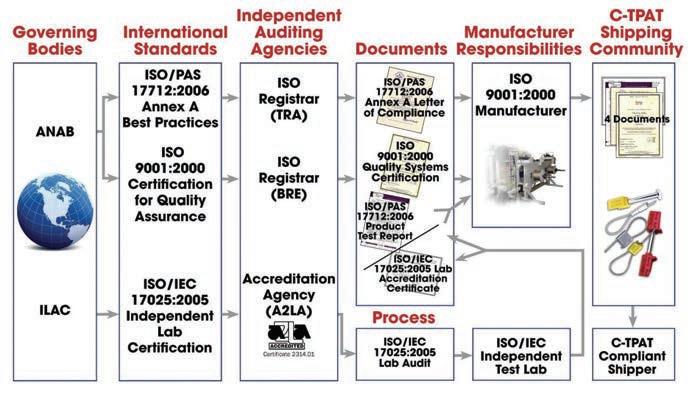
it is important to have the manufacturer provide the shipper with the lab’s most recent report for each seal type.
4. ISO/IEC 17025:2005 Independent Lab Accreditation Certificate – This document verifies that the independent testing laboratory has met the criteria of ISO/IEC 17025:2005 to test security seals to the ISO/PAS 17712:2006 Mechanical Seal Standard. An independent ISO-accreditation agency evaluates the lab for technical competence in the field of mechanical testing—which includes tensile, shear, bend, and impact trials for seals. Independent laboratories that receive accreditation are qualified to perform these tests for any seal manufacturer, and their certificates are recognized by C-TPAT. There are a number of laboratories in the US that are accredited to test seals to the ISO/PAS 17712:2006
the high security performance rating established by ISO/PAS 17712:2006. Shippers should request these documents from their seal manufacturer now and ask about updates regularly to maintain proof of C-TPAT compliance. DTJ
Materials for this article were submitted by TydenBrammall, a leading global supplier of indicative, security and high security seals, headquartered in Angola, IN. As cargo security experts, TydenBrammall manufactures a broad range of bolt, cable, metal strap, and plastic cargo seals for the truck, rail, container, food, and chemical processing markets. For information, contact TydenBrammall, 409 Hoosier Drive, Angola, IN 46703, 260-665-3176, fax: 260-6658309, e-mail: sales@tydenbrammall.com or visit CargoGuy sm at its Web site: www. tydenbrammall.com.

FORUM-GOERS MAY WANT TO CONSIDER TAKING AMTRAK TO CHARLESTON!
The Palmetto Route, which originates in New York and runs through to Miami, FL, makes a convenient stop in Charleston, SC. You’ll travel through Philadelphia, PA, Quantico, VA, and Raleigh, NC (see
full route details and complimentary services online at: www.amtrak.com). Plus, the Amtrak Station is located in North Charleston just minutes away from the Convention Center and official Forum Hotels. Approximate group fare at press time is $62 one-way. Pack a personal CD or DVD player with headphones (enter-
PARTNERSHIP FOR YOUTH SUCCESS (PaYS) PROGRAM
>> Amtrak and the US Army have joined forces to participate in the PaYS program, which provides career opportunities to soldiers upon completion of active duty service. The partnership was launched June 2007 with a ceremonial signing at Washington, DC’s Union Station. Under the PaYS program, the Army will screen and select applicants to receive transportation-related job training during their Army career, with the guarantee of an interview with Amtrak after completing military service. The Army will provide formal skills and on-the-job training to eligible enlistees, and Amtrak will conduct interviews and make job offers to qualified soldiers. In a related note, NCL Corporation is the first cruise line to participate in the US Army’s PaYS program.
tainment devices are available for rent at some stations), your camera and binoculars, maps to follow along during your journey, a travel journal, or a good book. Then sit back and enjoy the ride!
For reservations and information, call toll-free 1-800-USA-RAIL or visit the Amtrak Web Site. Be sure to check out Amtrak’s Veteran’s Advantage for discounted savings!
FORUM-GOERS MAY ALSO WANT TO CONSIDER TAKING TO THE SKIES!
If you plan to fly, you can add AirTran to the list of carriers that connect to Charleston (Continental, Delta, Northwest, US Airways, United Express, and American Eagle also offer flights to the city). AirTran launched service to Charleston this past May after receiving an overwhelming response to a recent online survey entitled, “Where do you want low fares next?” As consumers cast their votes for the airline’s next destination, it was clear that there was an overwhelming demand for low-fare, high-quality airline service in
Charleston, making it the 55th destination in AirTran Airways’ rapidly expanding route network. In addition to direct service with Atlanta, AirTran connects to 52 cities nationwide.
WHAT ABOUT THE BUS? FORUM GOERS MIGHT WANT TO HOP A BUS OR CHARTER A RIDE!
What about the bus? Trailways provides good connector bus service between
military installations on the Eastern seaboard if you want to hop a ride. Or, groups can charter a vehicle (cost from DC to Charleston, for example, would run approximately $40/person based on 55 passengers). For more information on Charleston area bus travel, contact Robert Clemmer of Lancaster Trailways of the Carolinas at 800-285-2027; www.Lancaster-tours.com. Contact their national site at: www.trailways.com.
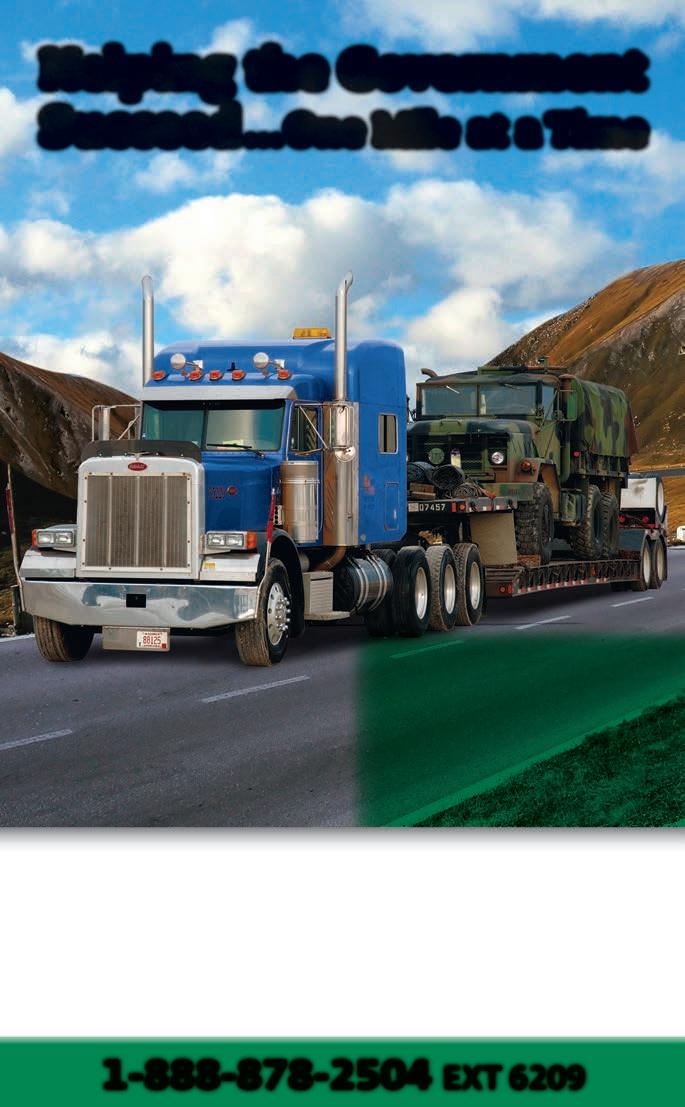
TRAILWAYS COMPANIES MUST POSSESS DOD SAFETY DESIGNATION
>> You’ll be pleased to know that all Trailways membercompanies are required to possess the DOD Safety designation. This designate guarantees that each Trailways company participates in the North American transportation industry’s most stringent annual onsite safety inspection and audit, which is implemented by the US DOD. This annual inspection carefully audits all areas of a company’s safe passenger transport service, including the company’s day-to-day operational practices, equipment maintenance, and ongoing driver education, drug-testing, and training.

Getting to the Forum is fun for Trish and Jim Schmig, veteran NDTA members. For several years, they have made the trip from their home base in Missouri by motorcycle, a 2004 Harley Davidson Road King. They haul a 44-foot trailer which is perfect for “pit stops” along the way. “We have a great time of it,” says Jim. “Plus, we’ve got a lot more freedom to ride around and enjoy the area after we arrive.” Jim is VP, Government Division (QTI), and his wife, Trish, is President (Crossland).
As a matter of fact there are more than 3800 registered motor coach operations listed with the DOT throughout North America. Of that number, only 459 of these motor coach operations possess the DOD safety designation; the entire Trailways system of operators is among those four hundred plus motor coach companies having achieved this level of “operational safety” certified by the US Defense Department! DTJ
The NDTA is proud to announce individuals and organizations who have made significant contributions to our Defense Transportation System and who have shown exemplary support of the Association. Awardees will be recognized at the NDTA 61st annual Forum & Exposition scheduled September 15-19 in Charleston, SC.
National Transportation Award
Mr . James L . Henry
President’s Award
Mr . Daryl Deel
Mr . Kenneth C . Gaulden
General Walter Kross, USAF (Ret )
International Chapter of the Year
Category I
Valley of the Sun Chapter
Category II
Charleston Chapter
Category III
Washington, DC Chapter
A-35 Chapter of the Year
Category II
San Antonio Chapter
Category III
Washington, DC Chapter
Membership Recruiting Awards
Category I
South West Asia
Category II
Charleston
Category III
Washington, DC Chapter
Individual Recruiter | Regular & A-35
Mr Will E Jordan – Arizona Frontier
DOD Distinguished Service Award
LTG Claude V . Christianson, USA
President’s Special Achievement Award
Mr Steven Cubarney
LTC John Fasching, USA (Ret )
Educator Distinguished Service Award
Professor Ik-Whon G Kwon, PhD
John Cook School of Business, St Louis University
Distinguished Service Award
Ms . Maxine D Bonniwell Washington, DC (posthumous award)
Ms . Jane E Clark Scott-St. Louis
Ms . Yvonne Frazier Valley of the Sun
Mrs SueAnn Fulton Central Pennsylvania
Mr Danny Gore Cape Fear
Dr Kent N Gourdin Charleston
SMSgt Rene Guionnaud, Jr , USAF Rheinland-Pfalz
1Lt Brian Higgins, USAF Charleston
Mr John M Joerger Washington, DC
Mr Krishan Kumar Scott-St. Louis

Mr . Thomas Loeffler Scott-St. Louis
Mr . Patrick K . Logan Charleston
Ms Lynn Nelson Norfolk-Tidewater
Mrs Fiona Slabbekoorn Benelux
Mr Kenneth L Thomas Scott-St. Louis
Captain Marc Van de Wal Benelux
COL Edward R Visker, USA (Ret ) Central Pennsylvania
Junior Executive Leadership Award (Civilian)
Ms . Heather Pound – Washington, DC (Military)
Mr . Thomas A . Fortunato – Washington, DC
Corporate Distinguished Service Award
Agility
APL Limited
American Roll-On Roll-Off, LLC
Avis Budget Group
Carlson Wagonlit Travel/Sato Travel CorTrans Logistics, LLC
DHL
Dollar Thrifty Automotive Group
FedEx Corporation
The Hertz Corporation
InterContinental Hotels Group
Landstar System, Inc
Lockheed Martin Maersk Line, Limited
National Air Cargo Group, Inc
Panther Expedited QUALCOMM
R&R Trucking, Inc
Southwest Airlines Super Clubs
Transportation Institute
UPS
The Brands of YRC Worldwide
Military Units Award
ARMY
57th Transportation Company
548th Combat Sustainment Support Battalion
A Company, 53rd Brigade Support Battalion
MARINE CORPS
Combat Logistics Battalion 1
Combat Logistics Regiment 1
6th Motor Transport Battalion 4th Marine Logistics Group
NAVY
Fleet and Industrial Supply Center, Pearl Harbor Commander, Fleet and Industrial Supply Centers
Navy Reserve Naval Air Forces Supply 1086 Naval Operational Support Center
AIR FORCE
723rd Air Mobility Squadron
721st Air Mobility Operations Group
118th Airlift Wing/Logistics Readiness Squadron Air Mobility Command
COAST GUARD
U S . Coast Guard Air Station Barbers Point Fourteenth Coast Guard District

PASSENGER TRAVEL UPDATE
green Passenger Travel
WE Can Make a GREEN Difference!
NDTA’s Passenger Travel Services Committee (PTSC) provides the opportunity for open communication between government and travel industry decision makers to improve programs, trends, policies, and other issues that impact the government traveler and the travel industry. Primary objectives are to facilitate dialogue, bridge any information gaps, and promote education of the travel industry. “Going GREEN” is a “bright idea” that may be added to PTSC discussion points. We’ll keep you posted.
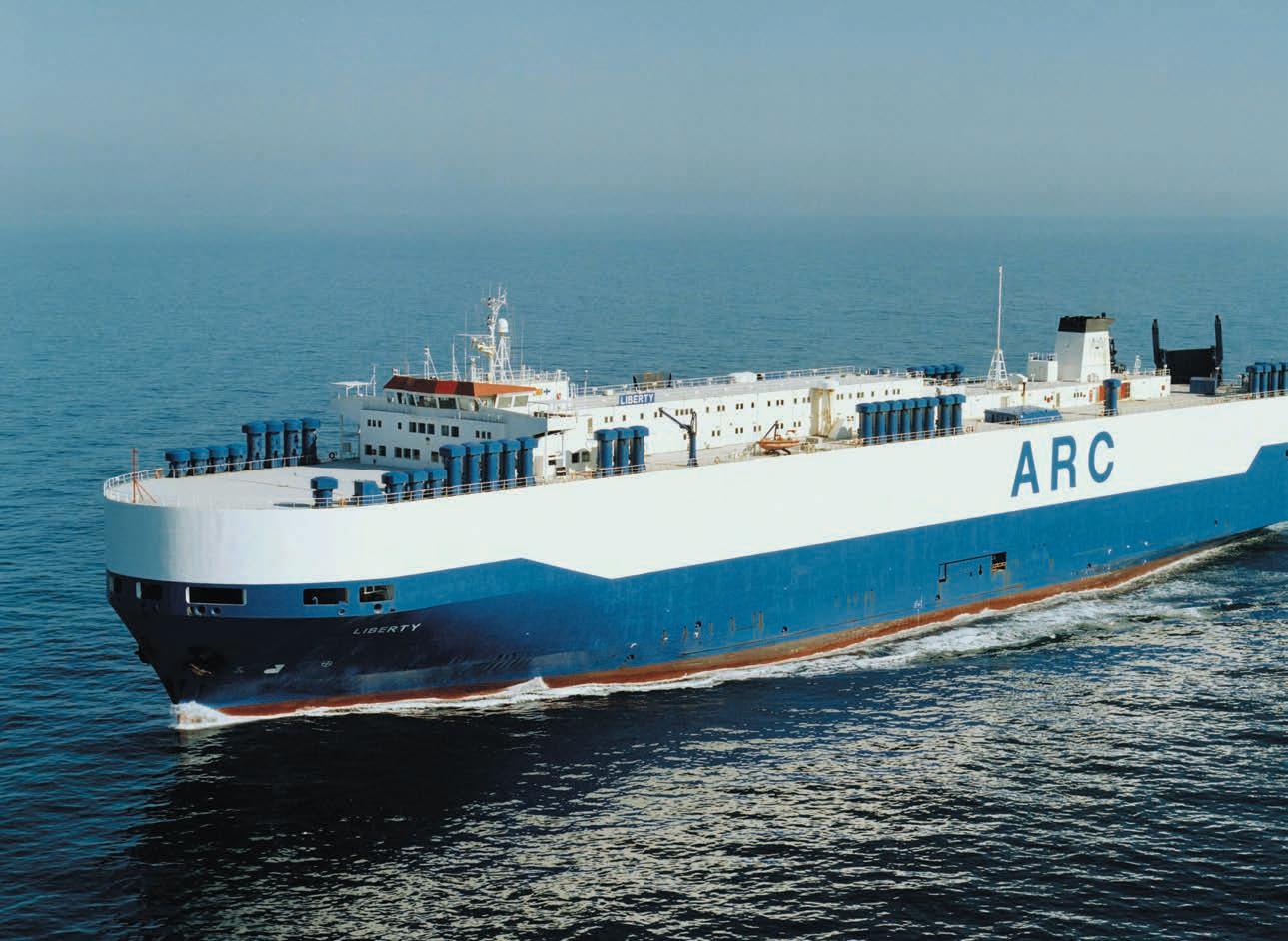
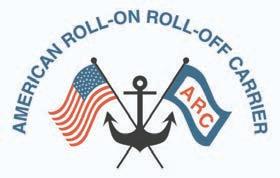
call 201-307-1626. www.arrcnet.com
PASSENGER TRAVEL SERVICES COMMITTEE
PARTNERSHIP in Motion
PTSC
CHAIR
Dr . G .R . “Rocky” Mobaraki, MBA, PhD
The Hertz Corporation | Director, Government Sales
The NDTA Passenger Travel Committee (PTSC) has been very busy this past year working with the government and industry to enhance official travel programs. PTSC members come from military, government, and those companies that implement and manage programs encompassing all facets of passenger travel including air, rail, bus, hotel, car, and travel agencies, as well as the travel publishing and electronic systems that support passenger travel. The efforts of the PTSC are probably more important to our NDTA members than most probably realize. The following article will briefly summarize the key issues the committee has been working on since the last NDTA Forum in Memphis.
The GSA airline city pair program, which is valued at more than $2 billion annually, is the program that determines what airline a government traveler utilizes between specific destinations. Although the airline industry participates in this program voluntarily, they continue to encourage the government to work with them jointly to enhance and improve the program. Two major concerns of the airline industry are the need to limit capacity for deeply discounted fares and to implement ticketing time limits. By limiting capacity, the government would be allotted a set number of seats on flights rather than having all seats available at deep discounted rates. Ticketing time limits would require tickets to be purchased within a specific time from when the reservation is made. Currently, the government can hold reservations up to flight departure time and purchase or cancel reservations at the last minute. When such cancellations occur, the airline is forced to fly an aircraft with unsold seats because government city pair airfares are completely refundable. While these proposed changes might not appear advantageous to the government on the surface, it does is allow the

government’s airline partners the opportunity to manage their business more effectively, which therefore helps encourage the airline’s continued participation in the city pair program. For 2008, the program will loose three airlines because the government has not considered these changes. One additional airline has elected to offer rates for domestic flights only and not international routes.
When government travelers arrive at their destination airports, most rent cars to complete their trips. These travelers spend approximately one-half billion dollars annually on car rentals. For almost 20 years, the Surface Deployment and Distribution Command (SDDC) car rental agreement has provided a comprehensive TDY and leisure travel program for the government. Prior to the current program, GSA managed a car rental program with rates based on a percentage discount off of “rack rates.” Rack rates are standard published rates available to the general public and are often the highest rates available. Liability coverages were not included, nor was Loss Damage Waiver (LDW)/Collision Damage Waiver (CDW) or unlimited mileage. Additionally, competition was limited with only a few car rental companies participating, thus receiving most of the business. In many cases, small businesses were unable to compete, and when contracted companies were out of cars, the noncontracted companies would often charge much higher rates. Another disadvantage was that because of limited competition, when contracted companies had cars available, noncontracted companies could not be utilized even if they offered lower rates.
In today’s agreement, each of the more than 20 participating car rental companies must agree to abide by specific requirements. Each company provides ceiling rates that prevent the government from being overcharged when demands are high
because the ceiling rates are the maximum amount that can be charged. Each company adjusts rates below ceiling to compete for business. Additionally, the government agreement lowers age eligibility restrictions from 25 to age 18 for official travelers and provides loss damage waiver and maximum liability of up to $300,000. These are just a few benefits that the government program offers. The business model of this program is simple and beneficial for both the government travelers and the car rental companies. The government car rental program is considered by industry and many government personnel to be the most effective of the various government travel programs. That success is due to the strong partnership forged by the government and industry, keeping the needs of all parties in mind.
Two major concerns of the airline industry are the need to limit capacity for deeply discounted fares and implement ticketing time limits.
In the area of official lodging, Federal Government travelers booked more than 20 million room nights annually, encompassing more than $2 billion in room nights stayed (according to Fed Rooms in 2007). The lodging industry continues to work with the government to ensure that the programs meet the needs of the government and travelers as well as industry. One specific item is lodging per diem and the need to set prices that are reasonable. Lodging per diem is the maximum amount a government traveler can receive for reimbursement while on official government business. Most locations within the United States (approximately 3000 counties) are covered by the standard CONUS amount, currently $60. Approximately 400 other locations in the United States such as Washington, DC, New York, and San Francisco have lodging per diems that
are considered nonstandard, meaning the rate is above $60. Per diems are established calculating an average rate that rooms are rented for in a given area. Only lodging establishments that meet the specifications of the Hotel and Motel Fire Safety Act of 1990 are considered when establishing the average rate and setting per diem.
The government has several hotel programs for TDY travel including Fed Rooms, Lodging Success, and Navy Elite. Though all of these programs have merit and offer benefits to the government and its travelers, there are strong advantages in consolidating the programs or even reducing the number to one lodging program for the entire government. With the current structure, gov-
rectly and provide valuable data to the government. Additionally, governmentcontracted travel agent companies continue to assist travelers with phone reservations, booking airline tickets, rental cars, hotel accommodations, and more. The travel agency industry is concerned with any initiative the government may undertake that would ultimately result in a negative impact on travel agency profitability or result in a reduced revenue stream. Such actions would have an end result of increased cost to the government traveler because travel agencies would be forced to pass on costs to the customer.
In the final analysis, all aspects of the passenger travel programs are linked to-
The government has several hotel programs for TDY travel including Fed Rooms, Lodging Success, and Navy Elite, etc. While all of these programs have merit and offer benefits to the government and its travelers, there are strong advantages in consolidating the programs or even reducing the number to one lodging program for the entire government.
ernment travelers as well as hotel personnel are often confused about which program should be utilized when making reservation or checking-in. This often causes frustration for the traveler. Additionally, managing multiple programs is more costly and time consuming for the lodging industry, which increases per night costs to the government. When further considering the financial aspect of government hotel programs, the government loses buying power at individual hotels because the revenue is not consolidated.
The government continues with the implementation of on-line booking systems—the Defense Travel System (DTS) is now widely used by active duty personnel and Department of Defense employees, and the E-Gov Travel Service products (E2 Solutions, FedTraveler, and GovTrip) are being utilized by Federal Government employees. Even with these systems, travel agencies continue to play a vital role in the government travel process. Travel agencies ensure that electronic reservations are processed cor-
gether to provide the best possible travel experience to our military and government travelers. The PTSC will continue to support the government and travel industry initiatives to maintain or improve value added programs that will benefit all stake holders. The PTSC is proud to have played a helpful role over the years in continually improving official travel programs.
In closing, I would like to give a big NDTA Welcome to Norwegian Cruise Lines, our newest NDTA and PTSC member. It is notable that NCL is our first American flagged cruise line since the demise of the S.S. United States, which, incidentally, they also own and plan to restore to her former glory. We are looking forward to working with NCL closely, and we particularly want to thank them for donating a Caribbean cruise as a prize for this year’s Forum. If you are a PTSC member or perspective PTSC member, I look forward to seeing you at our PTSC meeting in Charleston. Check the NDTA Forum Web Site, www.ndtahq.com/forum.htm, for details of meeting time and location. DTJ
(SUBCOMMITTEE CHAIRMAN*)

PTSC Chair
Dr G R “Rocky” Mobaraki, MBA, PhD
The Hertz Corporation
Director, Government Sales
PTSC Vice Chair and Airline
Committee Subcommittee Chair
Mr Denny Clifford
Director, Military and Government Sales
Northwest Airlines
Car Rental Subcommittee Chair
Mr . Mike Washkevich
Director, Government Sales
Avis & Budget Rent A Car
Hotels Subcommittee Chair
Mr Scott Lamb
Director, Government Sales
Hilton Hotels Corporation
Travel Agencies
Subcommittee Chair
Ms . Kelly Kuhn
President, Carlson Wagonlit Travel
SatoTravel
Travel Technology
Subcommittee Chair
Lisa Godfrey
DTS Program Manager
Northrop Grumman
Bus Subcommittee Chair
Ms Diane Walden
Vice President, Sales, Trailways
Extended Stay Lodging
Subcommittee Chair
Toni Kleinops
Extended Stay America
Passenger Rail
Subcommittee Chair
Mr Clifford Black
Chief Corporate Communications (Acting), Amtrak
Travel Publications and Services Subcommittee Chair
Col Dale Kissinger, USAF (Ret .)
EX-OFFICIO
Ken Wykle
President, NDTA
Denny Edwards
Vice President, NDTA

NDTA PASSENGER TRAVEL SERVICES COMMITTEE
AIRLINES
American Airlines
George Coyle
ATA Airlines, Inc
William Doherty
CSI Aviation Services
Ralph Paker
Donna Heinz
Delta Air Lines
Brian Munson
FlightWorks, Inc
Cynthia Karnik
Kalitta Charters, LLC
Steve Green
Luxury Air Jets
Rodney Kadymir
North American Airways
Lois Wilson
Northwest Airlines
Denny Clifford*
Omni Air International
Joe Vaughn, Jr.
Southwest Airlines
Merrill Taylor
United Airlines
Pat Broten
Michael O’Brien
US Airways
OPEN
World Airways
Lois Wilson
BUS
Trailways Transportation System
Diane Walden*
CAR RENTAL
Advantage Rent-A-Car
Clay Cribbs
Alamo/National Rent A Car [Vanguard]
Jeff Coggin
Belissa Lea
Avis/Budget Rent A Car
Mike Washkevitz *
Dollar – Thrifty Automotive Group
Randy Tietsort
Mark Cronin
Enterprise Rent-A-Car
Lisa Burgess
Bryan Scott
Xavier Trimiew
Europcar
Frank Langbein
Tony Dolt
Olivier Jacquet
Fox Rent A Car
Jose Giraldo
The Hertz Corporation
Rocky Mobaraki
Lori Leffler
Payless Car Rental
Kathy Johnson
CRUISE LINES
Norwegian Cruise Lines (NCL)
Susan Robinson
Bettina Osterwind
EXTENDED STAY LODGING
AHI Corporate Housing
Scott Foster
Angela Bennet
Extended Stay America, Inc .
Toni Kleinops*
Oakwood Worldwide
Kathy Lane
Kris Dove
Virginian Suites
Alisa Hurt
Michele Grenz
HOTELS
Accor Hotels & Resorts
Lisa Stymist
AmeriSuites/Hyatt Hotels
OPEN
Best Western International
Mari Ann Gray
Dave Brogden
B F Saul Co – Hotel Division
Joel Carver
Candlewood Suites
Michelle Ducote
Carlson Hotels Worldwide
Linda Colovos
Cendant Corporation
Laura Dietrich
Choice Hotels International
Mary Sarkis
Lisa Kenner
Hawthorn Suites-Alexandria
Stacie Liverpool
Hilton Hotels Corporation
Scott Lamb*
Holiday Inn – Harrisburg West
Holiday Inn – On the Hill
Lana Aberant
Homewood Suites
Wendy Hensley
Hyatt Hotels & Resorts
Ron Keith
Anna Marie DiBattista
InterContinental Hotels Group
Jim Reiter
Judy Silcox
La Quinta
Lynn Shatterly
LTD Hotel Management Co
Georgeann Sharp
Oakwood Worldwide
Kathy Lane
Radisson – Waikiki
Newton Wong
Starwood Hotels
Ted Miller
SuperClubs
Jerry Goodrich
Wyndham Hotel Group
Bill Masciangelo
PASSENGER RAIL
Amtrak
Clifford Black*
TRAVEL AGENCIES
Omega World Travel
Gloria Bohan
Tempton Mistry
Carlson Wagonlit Travel | SatoTravel
Kelly Kuhn
Sally Bickner
Monnie Riggin
Scott Guerrero
Marc Stec
TRAVEL PUBLICATIONS & SERVICES
MilitaryAvenue .com
Col Dale Kissinger, USAF (Ret.)
OAG Worldwide OPEN
TRAVEL TECHNOLOGY
INNOVATA
Paul Chrestensen
Cathi Massi
Judy Smith
Northrop Grumman
Lisa Godfrey*
Sabre Travel Network
Jeffrey Goodell
GOVERNMENT
Defense Travel Management Office (DTMO)
Shiela Earle
Andrea Carlock
Paul Joyce
Program Management Office – Defense
Travel System (PMO - DTS)
Col Lynne Hamilton-Jones, USAF
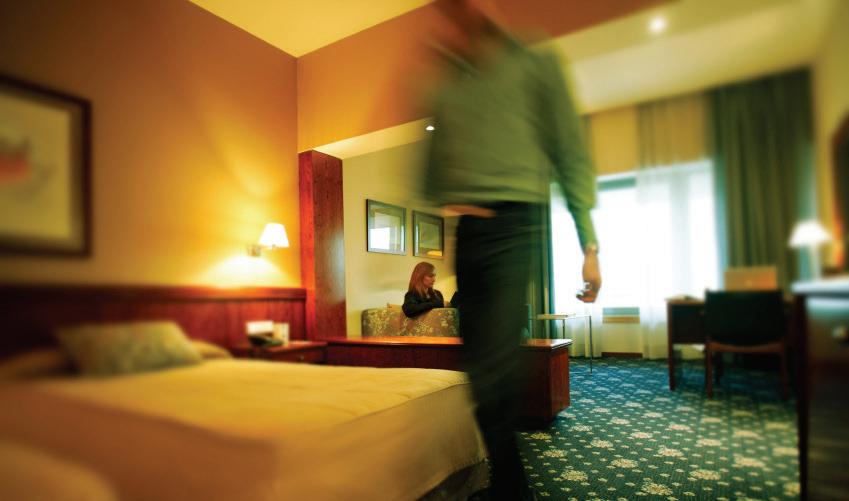
The US Travel Data Center estimates that 43 million US travelers are “ecologically concerned.” This group makes a good start, but we all can take part in the mission of Greening the Travel Industry! What you can do as an individual to Go GREEN? “Green” Hotels Association® provides the following tips to DTJ readers. The information may also inspire NDTA Chapter members to develop public awareness programs for the benefit of their communities.
Managers of all businesses react and respond to requests from guests, customers, and clients who voice their concerns. When you write a note or speak directly to management regarding our environment, you are casting a vote. You can write a note to the general manager of the hotel, to the captain of the airplane, and to the manager of a tour company or cruise line with compliments or comments regarding their green program. Thank them if they have one. Or ask why they don’t! As a paying customer, it is important that you let them know that you want them to lower water and energy usage or reduce solid waste— and that YOU want to participate in helping them to conserve resources.
Businesses with an environmental agenda deserve your patronization. Commercial efforts, however, should not stand alone. YOU can take action, too. Following are tips for the individual traveler.
As an Individual TRAVELER . . . getting ready to Go:
• Turn water heater/thermostat to “Vacation” or lowest setting. Lower waterbed heaters at least 10 degrees.
• Turn water off at outside connections (to prevent flooding should a pipe break while you’re gone); upon return, turn water on slowly to check for problems. Turn off the ice maker, too, in case it malfunctions.
• Appliances should be unplugged since they can draw as much as 40 watts per hour, even when turned off.
• Stop your newspaper or re-route delivery to a school or public library.
• Rather than buying travel size toothpaste tubes, squeeze some paste into a clean contact lens case or contact lens cleaning capsule. These are also handy for carrying salves or pills.
As an Individual TRAVELER . . . at your Destination
• Participate in hotel linen programs or let the hotel know that it’s not necessary to change your sheets and towels daily. Avoid room service whenever you can.
• Pack safety pins and small colored beads to mark towels for each family member if you plan to reuse them.
• Turn off the AC/heat, lights, TV, and radio and close the drapes when leaving your room.
• Leave those little bottles of amenities behind if unopened.
• Pack night lights rather than leaving room lights on all night long.
• Pass the complimentary newspaper on to someone else, or leave it in the lobby for another reader.
• Turn off exercise equipment, sauna, whirlpool, Jacuzzi, or tennis court lights when you’re through.
• When available, check out via the electronic program on the TV to help reduce paper consumption.
• Use public transportation in your destination city.
• Take walking tours.
• If you’re driving, turn your motor off when idling.
• Carry bottled water and refill as needed.
• Pack plastic bags to tote half-eaten treats or save hotel bar soaps.
• Avoid styrofoam—carry your own cup.
• When offered individual packaged condiments, take only what you’ll use.
• Take only the travel brochures or maps that you need.
• Don’t buy endangered species products of tortoise shell, ivory, animal skins, or feathers.
• Take pictures, not wild life samples, from parks or trails.
• Use a digital camera; disposable cameras are wasteful and expensive.
• Buy rolls of film with 36 shots rather than 12 or 24 to reduce packaging waste and save money.
• When dropping film off for processing, write your name clearly on the package; Kodak discards 400,000 rolls of film every year because specific information is illegible.
• Leave only footprints. Carry away everything you brought with you.
• Pick up at least one piece of litter every day—especially at national tourist locations which are vulnerable to huge tourist populations. DTJ

“Green” Hotels Association® (GHA), founded in 1993, is committed to encouraging, promoting, and supporting ecological consciousness in the hospitality industry. GHA publishes “Guidelines and Ideas”—135 pages of options, ideas, and techniques that hoteliers can use to conserve resources, reduce utility costs, and maintain a positive impact on beautiful destinations. The Association also offers a line of ecofriendly products and a GREEN Meeting Planners Guide for professionals. For a free list of “green” ideas for individual travelers or contacts to member hotels, visit www. greenhotels.com; PO Box 420212, Houston, TX 77242-0212; 713-789-8889; Fax: 713-789-9786.
Kudos to Corporate Members who take the steps to GO GREEN!
ROAD GREEN
Eco-conscious driving is a major concern these days, prompting private individuals to seek more responsible (and affordable) ways to get from here to there. The concern is receiving equal attention among rental car companies as they explore initiatives, add alternative vehicles, and demonstrate corporate commitment to our environment.

AVIS has been “greening” its fleet of vehicles, and by the end of June 2007 will have introduced 1000 Priuses into its fleet; vehicles will primarily be available in California, with some in the Washington, DC area, Seattle, and Portland. Avis representatives explain that the company will guarantee hybrid reservations. A hybrid car costs $5 to $10 more per day. But if 500 miles are driven in a hybrid car, it can save $20 to $45 in gas expenses versus a standard vehicle, making it popular with budget-minded customers who care about the environment.

ENTERPRISE RENT-A-CAR
has announced a comprehensive environmental stewardship platform featuring long-term initiatives, a fleet of fuel-efficient vehicles, and alternative fuels research. Enterprise “Green Operations” begins with cars—47 percent of its rental fleet (334,000 plus vehicles) averages a highway fuel efficiency rating of at least 28 mpg. The company’s FlexFuel initiative, launched in 2006, aims to maximize the use of more than 41,000 FlexFuel cars and light trucks in its US fleet that have the ability to burn high levels of ethanol-based fuel. In addition, Enterprise operates more than 3000 plus gas/electric hybrid vehicles powered by a combination of gas and battery-generated electricity. Enterprise’s environmental commitment also includes:
• Funding the advancement of alternative fuel research to reduce dependence on fossil fuels for the long haul.
• Launching the “50 Million Tree Pledge,” a partnership with The National Arbor Day Foundation and the US Forest Service whereby the company will underwrite the planting of 50 million trees in our country’s national forests over the next 50 years.
• Offering hourly vehicle rentals for urban residents seeking to limit vehicle ownership and reduce congestion.
• Managing vanpool businesses. Today, 1700 vans transport more than 16,000 commuters daily, reducing emissions and fuel consumption and easing road congestion.
• Cutting back on paper usage for administrative operations.
THE HERTZ CORPORATION is expanding its “Green Collection” of environmentally friendly rental cars with a $68 million investment in 3400 Toyota Prius hybrid vehicles, 100 of which will be designated specifically for the company’s Manhattan fleet. The collection, which launched in September 2006, includes more than 35,000 vehicles—Ford Fusion, Buick LaCrosse, Toyota Camry, Subaru Outback, and Hyundai Sonata— with an average Environmental Protection Agency highway rating of at least 31 miles per gallon available for rent in the US. The new Toyota Prius vehicles began arriving to the company’s fleet in June and will be available for rent at 50 major airport locations as well as New York. Additionally, more than 64 percent of the Hertz’ fleet gets 28 mpg or more.
For Hertz, Green Initiatives also expand beyond fleet:
• 99 percent of the fleet is equipped with vapor recovery controls to reduce emissions from the fueling process.
• All car washes at Hertz facilities recycle and reuse at least 80 percent of their wastewater; use of chlorinated solvents is banned.
• Contracts are awarded only to waste management vendors that recycle their used oil.
• Facilities nationwide use Energy Star–compliant office equipment including copiers, fax machines, and computers.
• $1 million was recently pledged to the National Park Foundation and $250,000 to benefit the “Mayor’s Fund to Advance New York City” in recognition of the mayor’s environmental efforts.
GREEN LODGING
According to Jessica Downey of Lodging Magazine, “Just about every product in a hotel has an
Top 10 Lodging Markets
or energy-saving counterpart. Recycled flooring and carpeting, energy-efficient windows, sensored lighting and HVAC, low-flush toilets, energy misers for vending machines—the market is brimming with green options.” Even though the US Hotel market is behind compared to overseas, properties are becoming more Green-wise.
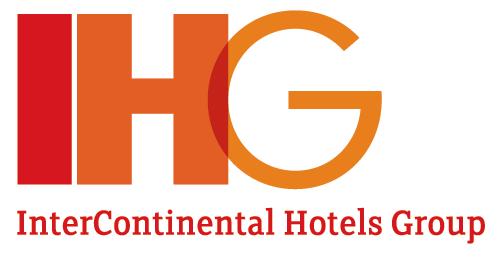
InterContinental Hotels (IHG), with franchise properties belonging to the Green Hotels Association, is a founding member of the International Hotels Environment Initiative (IHEI). IHEI got its start in 1992 as a nonprofit organization that has since evolved into the International Tourism Partnership (ITP), providing “responsible tourism through responsible leadership.” Recently, ITP launched its “Going Green” initiative to achieve greener goals for the industry. Originally, the term “Green” related primarily to environmental issues; the concept today, however, embraces all areas of sustainability and corporate social responsibility. “Going Green” standards cover six key areas: policy and framework; staff training and awareness; environmental management; purchasing; people and communities; and destination protection. These areas contribute to achieving beneficial results across the triple bottom line of economic, social, and environmental management.
Andrew Cosslett, Chief Executive Officer of IHG, explains, “Customers are seek-
ing a quality hotel at a competitive price, while increasingly demanding ethical and environmental business practices that make them feel good about their choice. Going Green standards will be an essential tool as it lays out, in a clear and concise format, the minimum standards that need to be implemented to make hotels more sustainable.” Hotels that participate in Going Green will also make a valuable
system fed by a 7874-foot pipeline, at a depth of 3000 feet, off the Bora Bora reef. The pipe pumps ice cold deep-sea water through a titanium heat exchanger, transferring it into a fresh water circuit that powers air conditioning in the hotel. The
Want to learn more about the FedRooms Program?
Attend one of the upcoming FedRooms 101 training sessions held via webinar on:
Wednesday, Aug 29, 1:00-1:30 pm CST Wednesday, Sept 26, 10:00-10:30 am CST
For complete details visit www.ndtahq.com/FedRooms.htm
system saves 90 percent of the hotel’s electricity consumption for air conditioning, or 2.5 million liters of fuel oil per year. The hotel was also designed to ensure the best use of natural light. During construction, all building materials were shipped at high tide to ensure minimal disturbance to the coral reef.

contribution to the countries and cultures in which they are located, and to their customers, their shareholders, and future generations through responsible tourism.
The InterContinental Thalasso Spa Bora Bora, opened in May 2006; accessible only by boat, it is a good example. It features an eco-friendly air-conditioning
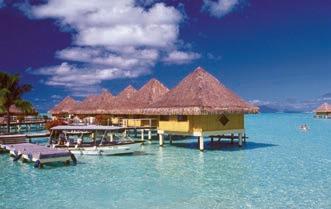
In a related move, IHG approved a change in their coffee supply in the US in 2006 by switching to higher quality produce from growers who work under the Rainforest Alliance umbrella. The Alliance looks to protect ecosystems and the people and wildlife that depend on them by safeguarding the rights and wellbeing of workers, conserving resources, and protecting the environment. The move is significant considering that coffee is one of the most consumed products in the Hotel business.
5 Most Expensive
5 Least Expensive
GREEN MEETINGS
Hotel maintenance and operations are not the only areas that are revamping their processes—event planning departments have begun tailoring their services to accommodate an environmentally conscious approach to hosting meetings and events.
The Environmental Protection Agency (EPA) has developed a questionnaire for hotels and convention centers bidding for EPA business that includes queries about recycling programs, energy efficiency, paperless billing, and reused towels. The agency said it would consider the answers when it evaluates bids. “We can use our
own purchasing power to influence behavior and to strengthen the link to our mission of protecting health and the environment,” said Thomas A. O’Connell, an EPA procurement director who led the Green Meetings Work Group that devised the new rule.
The General Services Administration, which sets policy for all government travel, is amending its own rules to suggest that government meeting planners consult the EPA checklist. That could affect a significant chunk of the $13.5 billion in annual federal spending for travel.
Many hotels may have little difficulty with the new scrutiny. The HYATT REGENCY at Capitol Hill, a frequent meeting place for government agencies, is already certified by Green Seal, which designates companies with leading-edge environmental practices.
GREEN MOVING AND HOUSEHOLD SHIPMENTS
Whether you are moving into your first home, or in the midst of yet another job relocation, a few extra tips for managing your transition are always helpful. The tips have even more impact when they include Green Guidelines!
MAYFLOWER, in keeping with today’s online world, has released “Your Best Move,” a Podcast series that enables listeners to plug in their portable media devices, download the latest episode, and listen while they’re on the go. A series synopsis includes:
Episode 1, “Movin’ Green,” looks at the best ways to make your next move more environmentally friendly: how to pack, donate, dispose or, and move items with the least ecological impact. This podcast provides tips on how to deal with all of the “stuff” that tends to accumulate over a lifetime, how to safely transport and dispose of hazardous materials, and the best ways to find waste and recycling services in your new city.
Episode 2, “Movin’ in the City,” focuses on the special challenges of moving in an urban area. While the proximity to museums, restaurants, and urban employers are benefits to living in an urban area, the complexity of making a seamless move can be quite frustrating. This episode simpli-
TRAVEL LINKS
>> Travel Links that may be of interest to the nongovernment/military traveler
• Away com
Operated by Orbitz Worldwide
• BootsnAll com
Operated by BootsnAll Travel Network
• CruiseCritic .com
Operated by The Independent Traveler, Inc.
• Fodors com
Operated by Fodor’s Travel, a Division of Random House Inc.
• Frommers com
Operated by John Wiley & Sons, Inc.
• IgoUgo com
Operated by Travelocity, a Sabre Holdings Corporation
• IndependentTraveller .com
Operated by The Independent Traveler, Inc.
• Kayak com
Operated by Kayak.com
• PlanetRider com
Operated by PlanetRider
• Site59
Operated by Travelocity, a Sabre Holdings Corporation
• SlowTrav com
Operated by Internet Brands, Inc.
• SpecialtyTravel .com
Operated by Specialty Travel Index
• TravelIntelligence net
Operated by Travel Intelligence, Ltd.
• TravellersPoint com
Operated by Tupela, Ltd. AS.
• TravLang .com
Operated by Travlang Online, Inc.
• TripAdvisor com
An operating company of Expedia, Inc.
• VirtualTourist com
Operated by Virtualtourist.com, Inc.
• WebTravelManager .com
Operated by WebTravelManager.com
• World66 com
Operated by Internet Brands, Inc.
• WorldHum com
Operated by World Hum
fies the urban moving process with tips on parking, scheduling, elevators, security and making good first impressions, as well as pointers on how to do your due diligence prior to selecting a professional mover.
Episode 3, “Moving Home Electronics,” offers suggestions on how to deal
The government is traveling across the US! ARE YOU GETTING YOUR SHARE OF ITS BUSINESS?
1. Arlington, VA
2. Washington, DC
3. Alexandria, VA
4. San Diego, CA
5. San Antonio, TX
6. New York, NY
7. Atlanta, GA
8. San Francisco, CA
9. Chicago, IL
10. St. Louis, MO
11. Oklahoma City, OK
12. Las Vegas, NV
13. Albuquerque, NM
14. Denver, CO
15. Dallas, TX
16. Orlando, FL
17. Seattle, WA
18. New Orleans, LA
19. Kansas City, MO
20. Houston, TX
21. Baltimore, MD
22. Los Angeles, CA
23. Norfolk, VA
24. Philadelphia, PA
25. Phoenix, AZ
26. Colorado Springs, CO
27. Tucson, AZ
28. Tampa, FL
29. Boston, MA
30. Miami, FL
31. Portland, OR
32. Vienna, VA
33. Virginia Beach, VA
34. Huntsville, AL
35. Memphis, TN
36. Anaheim, CA
37. Salt Lake City, UT
38. El Paso, TX
39. Indianapolis, IN
40. Biloxi, MS
41. Long Beach, CA
42. Nashville, TN
43. Bethesda, MD
44. Sacramento, CA
45. Herndon, VA
46. Columbus, OH
47. Springfield, VA
48. Autsin, TX
49. Charleston, SC
50. Arlington, TX
Source: GSA - FedRooms
with electronics that can be complicated to move and expensive to replace. This podcast covers ways to dismantle and safely pack a home computer and printer and how to keep expensive large-screen, plasma, and LCD televisions safe during the moving process. Tips on using everyday items found in the home to help safely pack electronics of all sizes are also provided.
“Your Best Move” podcasts can be found on Apple’s iTunes and on the Mayflower web site www.mayflower.com/moving/ moving-tips/mayflowers-your-best-movepodcast-series.htm.
GREEN AIR
Our skies are getting more crowded, but at least one aspect of air travel is improving—engineers are learning how to reduce the damage that flying does to the environment, according to recent industry reports (The Economist, June, 2007).
Depending on what measures are used, aviation is responsible for between two percent and three percent of all humanmade carbon dioxide emissions. As air travel grows, that figure is expected to rise
Did you know...?
SOUTHWEST AIRLINES was the first to offer electronic ticketing systemwide.
rapidly. The environmental outlook worsens once emissions of nitrogen oxides and soot are taken into account—scientists differ on how they affect the environment, but some believe they might double the warming effects of carbon dioxide.
The picture seems bleak, but as both fuel prices and air-travel demand rise, airplane makers have sought to develop planes that are cheaper and greener to operate. For example, the new 787 Dreamliner from BOEING, set to enter service next year, is lighter than any similarly sized metal aircraft. That cuts fuel needs by some 20 percent.
Meanwhile, manufacturers are looking at designing aircraft in a way that would boost efficiency. Proposals include fully enclosing engines, which would burn 25
percent less fuel and operate more quietly to boot. An idea adopted from stealth fighters would blend the wings into the passenger cabin. Such a plane could offer huge fuel-efficiency gains, albeit with a passenger experience a little too reminiscent of Top Gun. Scientists are also studying alternative energy such as blending
Top 15 US Airlines
bio-fuels with jet fuel, or using fuel cells to power either engines’ or airplanes’ auxiliary gas turbines used when parked on the tarmac.
Incremental improvements eventually add up. A one percent savings in fuel represents hundreds of tons of fuel a year for the average airline, and a similar reduction in emissions. By 2020, one aviation expert predicts that he industry will have halved its fuel burn from the year 2000.
GREEN RAILS
Norfolk Southern (NS) does not carry passengers, but the company proves that it’s GREEN in terms of travel! One train can take up to 300 truckloads of freight off of our congested highways. That helps reduce pollution, fuel use, and demand for foreign oil. NS recycles, adopts clean technologies, and works with public agencies and other partners to promote environmental stewardship. That’s good for the environment and the economy! DTJ



WELCOME TO OUR NEWEST “GREEN” PTSC MEMBER
NORWEGIAN CRUISE LINE
NCL Corporation (NCL) owns and operates an impressive fleet of ships that feature Freestyle Cruising and family fun. NCL America, a subsidiary operating Pride of America, Pride of Hawaii and Pride of Aloha, carries the singular distinction of being the largest US-flagged cruise line. Both NCL and NCL America employ the highest standards when it comes to protecting the environment. The company shares that awareness with all of its passengers—young and old alike.
NCL is heavily invested in protecting the environment. The policies, technologies and training onboard its ships are among the most stringent, exceeding existing laws and international conventions.
TRAINING: All NCL crew receive environmental procedures training prior to assuming duties as well as specialized training appropriate to their individual job and responsibility. An environmental officer is onboard at all times to oversee training and compliance.
TECHNOLOGY: NCL ships are fitted with incinerators that burn oil, paper, cardboard, some plastics, and on some ships, bio sludge and dried food waste. What cannot be burned, or where incineration is not permitted, is brought ashore for recycling or disposal by licensed disposal companies. Recently, several NCL ships have gained the capability to dry, sterilize, and offload inert sewage for recycling where feasible.
NCL employs state-of the-art advanced wastewater treatment systems that treat black water and gray water to near drinking water standards. In fact, several NCL vessels have been approved for continu-
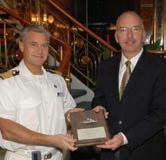
Captain Mikael Hilden (Norwegian Sun) accepts the Port of San Francisco’s Cruise Ship Environmental Award from Peter Dailey, maritime director for the Port of San Francisco, on May 1, 2007. The Port recognizes cruise ships whose onboard environmental systems help decrease air and water pollution. Three categories are evaluated: air emission reduction, wastewater treatment, and recycling and disposal programs for solid waste.
THE NCL FLEET
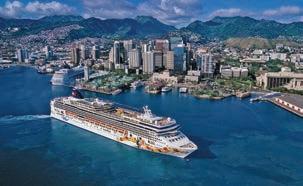
>> Norwegian Cruise Line is an innovative cruise line based in Miami, Florida, with a total of ten ships currently sailing international itineraries and under construction. Once Norwegian Gem is delivered, more than 80 percent of NCL’s capacity will be big, new and modern, keeping NCL on track to offer the youngest fleet in the industry by the end of 2007.
NCL’s fleet includes:
Norwegian Crown
1,078 (Norwegian Crown is leaving the fleet in Oct. 2007)
NCL’s Freestyle Cruising challenges the conventional model of cruising and is designed to meet the changing needs of today’s cruise passengers. Freestyle Cruising is characterized, in particular, by having no fixed dining times, no formal dress codes, up to 10 distinct restaurants, relaxed disembarkation, and even more lounges, bars, theaters, and other entertainment and activity options.
NCL offers a variety of itineraries, including Caribbean, Alaska, Europe, Bermuda, Hawaii, Bahamas & Florida, Canada & New England, Mexican Riviera, Pacific Coastal, Panama Canal, and South America.

NCL AMERICA
NCL America ships are US-flagged vessels. All three ships offer Freestyle Cruising and currently sail seven-day inter-island Hawaii cruises visiting the four main islands: Kauai, Oahu, Maui and Hawaii.
(Norwegian Gem will join the fleet in Oct. 2007)
ous discharge in port because the water is so clean and the quality assurance procedures are so rigorous.
NCL uses low sulfur fuels in environmentally sensitive areas throughout the world to prevent acid rain. The company is also installing fuel-water emulsion systems, “cold iron” port electrical plug-in capability, electronic fuel injection, and multi-fuel capabilities on its newer ships to ensure minimal air emissions wherever it sails. The company has also pioneered recycling of used lube oil and routinely recycles plastics, aluminum, steel, batteries, oil sludge, and a wide variety of consumer products.
POLICY: In addition to its continuous improvement process, each year, NCL ships undergo a week-long audit to ensure compliance of all United States and international environmental regulations and to ensure that NCL engages in the best possible practices and procedures in protecting our environment. Furthermore, the company has created a Safety and Environmental Protection Policy, which establishes objectives relating to the environment including waste disposal, recycling, usage of environmentally friendly materials and technology, and accident prevention involving pollution.
Guest Tonnage Capacity
NCL has also developed and implemented a Corporate Code of Business Ethics to ensure that all NCL employees, shipboard and ashore, rigidly adhere to NCL’s environmental policies and stewardship. In early 2007, NCL announced that it has signed a multi-year agreement with the Port of Los Angeles that includes several measures designed to support the port’s clean air initiatives.

OFFICER SNOOK WATER POLLUTION PROGRAM FOR KIDS
Beginning in 2006, all NCL and NCL America ships introduced onboard programs to educate young people about the importance of clean water and the effects of marine pollution and ways to prevent it. The program, borrowing on the Officer Snook model, stresses involvement with activities for kids of all ages. Kids ages two to five years old can enjoy an Undersea Hospital, story-telling, coloring books and games. Crafts, a simulated “Beach Clean Up” activity, and a “Catch or Release” game identifying endangered species and an environmental poster contest are provided for pre-teens. A special component allows high school students to earn between one and five community service hours depending on their level of involvement in the Officer Snook Program. These hours may be used at the teen’s school as part of their community service allotment.
The Officer Snook Water Pollution Program was started in 1993 by Jennifer Sevin, then a Florida high school senior, to educate local elementary school students about water pollution. It has since grown nationally. To date, more than five million students in grades pre-k through 12 have participated in an Officer Snook presentation or related activity. The United States Coast Guard (USCG), as part of its national “Sea Partners Campaign,” conducts the Officer Snook Program through 35 USCG Sector Commands.
PROTECTING MARINE INHABITANTS
Passengers aboard NCL America’s USflagged ships in Hawaii are treated to luxurious accommodations and pristine sailing conditions. The crystal clear waters and the lush coastline of the islands lend themselves to picture-perfect cruising—an

environment that NCL endeavors to protect through responsible operations. The aquatic inhabitants are equally important.
In cooperation with the NOAA Pacific Islands Fisheries Science Center, National Fisheries Service, NCL has been taking part in the Green Turtle release program whereby turtles bred and nurtured in captivity are returned to the wild. Young hatchlings are carried on board to safe haven destinations approximately three to five miles off shore. Passengers lucky enough to be onboard for “release cruises” also share pride in protecting precious marine life. DTJ

CHAPTER NEWS*
CAPE FEAR CHAPTER
The Cape Fear Chapter’s third annual Scholarship Golf Tournament, held at the Sea Trail Resort in Sunset Beach, North Carolina, was another great success this year. A team representing the North Carolina State Ports Authority won the tournament this year followed, by Wilmington Shipping and Baggett Transportation. Scheduled during National Transportation Week in May, 112 golfers from across the country convened once again on the Rees Jones course and enjoyed the venue, camaraderie, and opportunities to network. The tournament had sponsorship from national and regional industries including hole sponsors
*Some articles have been condensed due to limitations in space.
Ace Transportation, Baggett Transportation, Brunswick Electric Membership Corporation, Chassis King, East Coast Holdings, Jones Ford, Landstar Carrier Group, Landstar Inway, Landstar Ranger, LB&B Associates, Marine Terminals Corporation–East, Mi-Jack, National Air Cargo, NICO Shipping, North Carolina State Ports Authority, Ocean Power & Equipment Co. Inc., Perk Logistics LLC, R&R Trucking, Sealift Holdings Inc., SupplyCore, and Wilmington Shipping. Other sponsorship was provided by Boyle Transportation, CSX Transportation, FedEx, Government Transportation Information and Services, and Tri-State Motor Transport. Tournament sponsors
GOVERNMENT NEWS*

GENERAL SERVICES ADMINISTRATION
The GSA announced awards to all four companies that bid for spots in a program to provide credit card services to federal agencies. The contracts for GSA’s SmartPay2 program to supply purchase, travel, fleet, and integrated charge card services went to Citibank, GE Capital Financial, JPMorgan Chase, and US Bancorp. They will last until 2018 if all options are exercised, and have an estimated value of $26 billion annually. There is no cap on the value.
A spot in the program means the companies are eligible to market their services; the awardees will undergo another layer of competition as they vie to win individual agencies’ business. Agencies have until November 2008 to complete the transition to new providers.
The five existing SmartPay providers handled $26.5 billion in purchases and 98.6 million transactions in fiscal year 2006, according to David Shea, the program’s director. Two of those providers— Bank of America and Mellon Bank—opt-
were formally recognized at a dinner held in the evening at the Sea Trail conference center. Mr. Bill Wanamaker, American Trucking Associations, served as the keynote speaker.
SAN ANTONIO NDTA CHAPTER
The San Antonio Chapter is pleased to announce their slate of newly elected officers; term begins July 2007. President, Mary B. Hall; 1st Vice President, Sallie M. Owenby; 2nd Vice President, Jay Yerkey; 3rd Vice President, Donna Teat; 4th Vice President, Harry Reese; Secretary, Paul Davis; Membership, Jay Yerkey; and Web Master, Rufus Reed. DTJ
*Some articles have been condensed due to limitations in space.
ed out for the next round, meaning their customer agencies will need to look elsewhere for service. Shea noted, however, that regardless of their current provider, agencies are expected to entertain offers from all four awardees.
The new cards will feature several improvements, Shea said, including a graphic design that makes them easier to identify. They also will have elements aimed at improving oversight. For instance, supervisors will receive a notification e-mail
when employees use the new cards, making it easier to track what is bought and when. [By Amelia Gruber. Government Executive.com. June 7, 2007]
The GSA has also awarded one-year contracts, totaling more than $2 billion, to 14 US carriers, effective October 1. “These contracts provide flexibility and choice for federal travelers while saving taxpayer dollars,” said GSA Administrator Lurita Doan. “The program’s responsive approach to changing travel destinations,
combined with lower fares for advance reservations in selected markets expands the governmentwide savings opportunities.” As the premier federal procurement agency, GSA offers discount commercial airfares to federal travelers on official business, at an average 69 percent below full commercial fares. For FY 08, the discount is expected to generate a savings of more than $4.5 billion on 5002 domestic and international routes. GSA awarded the contracts June 21, based on average flight time, price, service, flight distribution, number of flights, available seats, fully refundable tickets, and penalty-free cancellations and schedule changes. The oneway contract fares permit agency travelers to plan multiple destinations. GSA awarded FY08 federal airline contracts to the carriers listed in the chart on page 28.

MILITARY SEALIFT COMMAND
The Navy’s newest underway replenishment vessel has been named the USNS Amelia Earhart (T-AKE 6) in honor of Amelia Mary Earhart for her courage, vision, and groundbreaking achievements, both for aviation and for women. A keellaying ceremony, a shipbuilding tradition signifying an important milestone as fullscale production begins, was held soon after and event honoree, Darlene Costello, welded her initials into the keel. Costello is the deputy director for Naval Warfare in the office of under secretary of defense for

Acquisition, Technology, and Logistics. The Amelia Earhart is scheduled to be delivered to the Navy’s Military Sealift Command (MSC) in the fall of 2008. The ship will be 689 feet long and displace about 41,000 metric tons when fully loaded.
DRY CARGO/AMMUNITION SHIPS – T-AKE DESCRIPTION
>> USNS Amelia Earhart (T-AKE 6), part of the new Combat Logistics Force (CLF), is an underway replenishment vessel. The T-AKE Program calls for up to 12 ships and has a budget of approximately $4B. The program resides within the Navy’s Program Executive Office, Expeditionary Warfare —Support Ships Boats and Craft Program Office (PEO EXW/PMS 325).
Features
As an auxiliary support ship, T-AKE will directly contribute to the Navy’s forward presence. As its primary mission, the T-AKE will provide logistic lift from sources of supply such as friendly ports or at sea from specially equipped merchant ships by consolidation and will transfer cargo (ammunition, food, limited quantities of fuel, repair parts, ship store items, and expendable supplies and material) at sea to station ships and other naval warfare forces. In its secondary mission, the T-AKE may be required to operate as a substitute station ship to provide direct logistics support to the ships within a Carrier Battle Group.
Background
The primary goal of the T-AKE program is to provide effective fleet underway replenishment capability at the lowest life cycle cost. To meet that goal, the ships will be designed and constructed to commercial specifications and standards and certified by the American Bureau of Shipping, the US Coast Guard, and other regulatory bodies. The new ships will be operated by MSC, and are being built in San Diego by General Dynamics National Steel and Shipbuilding Company.
From USN Fact File

MILITARY SURFACE DEPLOYMENT AND DISTRIBUTION COMMAND
This fall, DOD Customers (Service Members and Department of Defense Civilians) will be eligible for Full Replacement Value (FRV) protection on most DOD-funded personal property shipments. FRV coverage will apply to personal property shipments with a pickup date on or after:
• 1 October 2007 for International shipments (to/from OCONUS)
• 1 November 2007 for Domestic shipments (within CONUS)
• 1 March 2008 for Non-Temporary Storage (NTS) shipments
• 1 March 2008 for Local Move/Direct Procurement Method (DPM) shipments
Under the FRV program, the Transportation Service Provider (TSP)/Carrier is liable for the greater of $5000 per shipment or $4.00 times the net weight of the shipment (in pounds), up to $50,000 total. There is no extra cost to the customer for FRV coverage, but the claim must be filed directly with the TSP within nine months of delivery to receive Full Replacement Value. The TSP will settle the claim by repairing or paying to repair damaged items, and by replacing or paying Full Replacement Value for items that have been lost or destroyed. When the claim is filed directly with the TSP, the TSP will be responsible for obtaining all repair and replacement costs. Providing prompt notice of loss and damage will still be an essential part of the process.
The SDDC has published a detailed set of guidelines to govern the application of FRV coverage on its website. DOD users can find it at www.sddc.army.mil, click “Personal Property/POV” in the upper right-hand corner, and under “Quick Links” at the right of the page, click “Full Replacement Value Information.” The direct address of the page is: http://www. sddc.army.mil/sddc/Content/Pub/38216/ proposed_procedures_for_claims_with_ frv-current_program.pdf.
Service Members can also find more information on the Claims web pages for their particular Branch of Service. DTJ
Amelia Earhart’s name became a household word in 1932 when she became the first woman—and second person—to fly solo across the Atlantic in a Lockheed Vega. Photo: “Amelia Earhart, Aviator and The Story of Amelia Earhart, Lost Star,” by Patricia G. Lauber
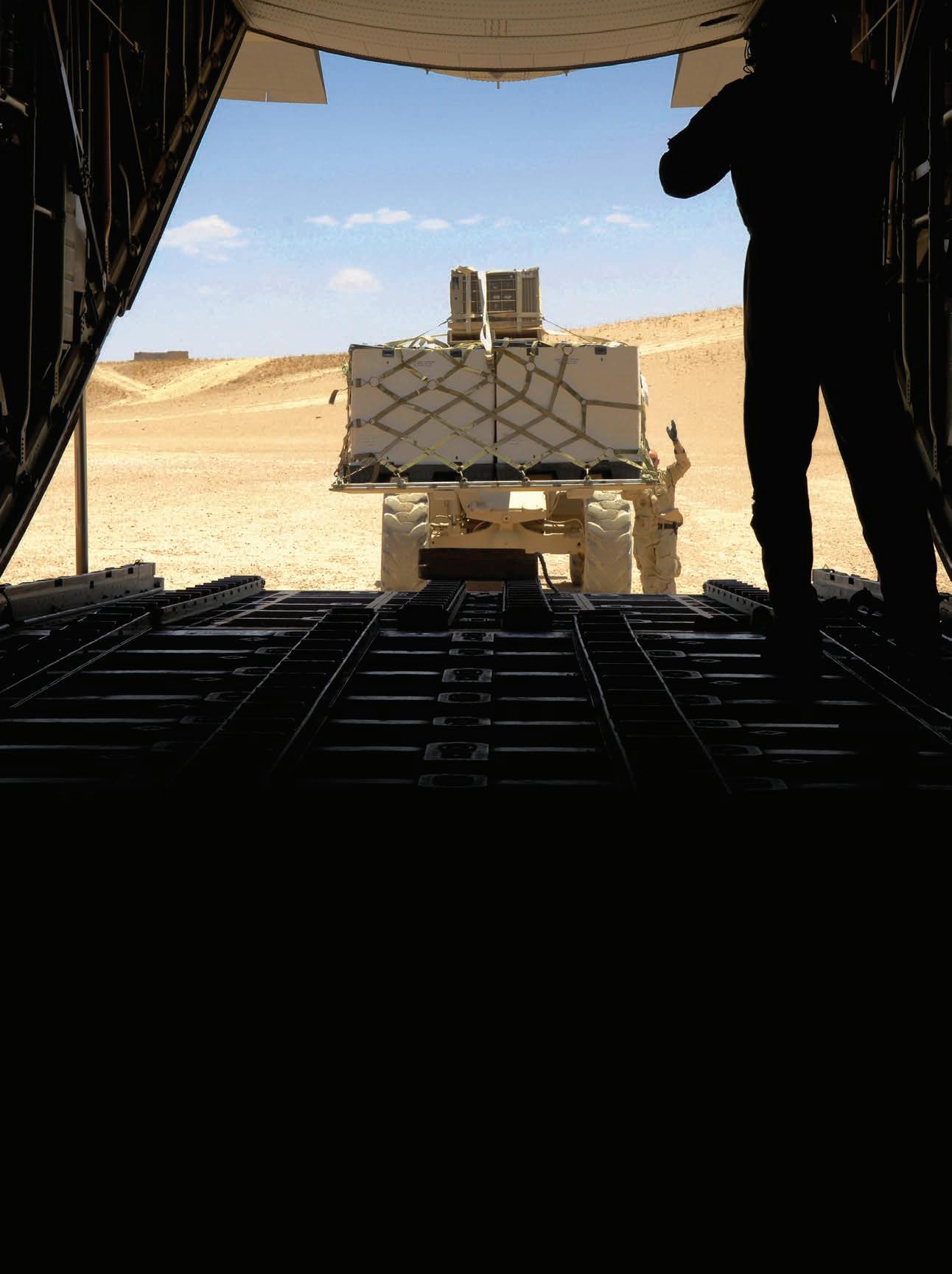
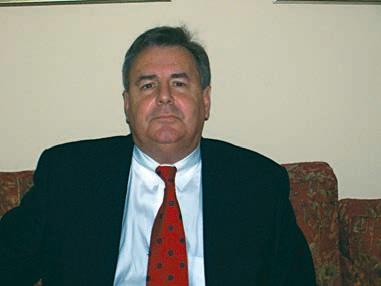
OHomeland Security Bill Contains Key Transportation Elements
Lee Jackson Senior Vice President and Chief Operating Officer Strategic Solutions, LLC
n June 14, 2007, the Senate Appropriations Committee voted and passed a proposed $37.6 billion spending bill, designed to address the nation’s most pressing security needs. The bill contains provisions that would implement many of the recommendations of the 9/11 Commission, as well as fulfill many of the commitments made by the House in the 9/11 bill passed in January.
Many aspects of the bill include provisions and funding that directly supports transportation, although there certainly is more needed in this writer’s view. The Transportation Security Administration is provided $6.62 billion, $307 million above their 2007 funding level and $219 million more than the President’s request. The funding provided to TSA supports:
1. expansion of the explosive detection system designed to protect commercial aircraft and the process of aviation bagging screening;
2. doubling the amount of cargo screened on passenger aircraft; and
3. a secure flight certification, requiring the head of TSA to certify that no security risks are raised by TSA’s Secure Flight plans that would limit screening of airline passenger names only against a subset of the full terrorist watch list.
It is noteworthy that Customs and Border Protection (CBP) is also slated to receive $8.8 billion ($50 million above
the request and $797 million above their 2007 funding level). These monies are provided to support border security fencing, add additional border patrol agents and provide funding that supports the addition of 250 more Customs and Border Patrol Officers for commercial operations, as well as CBPs.
Customs Trade Partnership Against Terrorism Program (C-TPAT) validation process verifies that “trusted shippers” have in place necessary security measures—as mandated by the SAFE Port Act.
Key provisions of the bill include support for programs such as:
• $4.52 billion in First Responder and Port Security Grant Programs to include;
– Port Security Grants of $400 million to protect critical port facilities and infrastructure, meeting the level authorized in the Safe Ports act. This is the largest single investment Congress has made to implement the security requirements of the Maritime Transportation Security Act;
– State Grants of $950 million, which include law enforcement monies to plan, equip; and train local first responders to respond to terrorist attacks and catastrophic incidents;
– Urban Area Grants of $800 million to assist high risk urban areas with improving their prevention, protection; and response and recovery from acts of terrorism;
| IN MEMORIAM | Mr. Jim DiJulio, Sr.
Jim DiJulio, Sr., lifetime member of the NDTA, passed away at the age of 103 years. He was born on Easter Sunday, April 3, 1904, in Black Diamond, Washington. Jim traveled extensively for work and sometimes for pleasure. His
career as manager of Lincoln Moving & Storage and his initiation of moving service to Alaska and consequent development of Alaska Orient Van Lines took him north many times and often into freezing weather. Jim was known for his
–
Transit Grants of $400 million to protect critical transit infrastructure, including rail and ferry systems in high-threat areas;
– Emergency Management Grants of $300 million for all-hazards grants for State and local emergency managers;
– Fire Grants of $800 million to support communication, equipment, and staffing problems facing local fire departments, including the SAFER program;
Metropolitan Medical Response System funding of $50 million to help “high threat” communities respond to mass casualty incidents; and
– Interoperable Communications Grants of $50 million to continue a program funded by the Department of Commerce to help police, firefighters, and emergency responders to talk to each other during a crisis.
As of this writing, it is not clear which of the provisions of the bill will survive and which will be dropped. House Appropriations Committee Chairman David R. Obey (D-Wis.) wants to keep hundreds of earmark requests out of the bill until later in the process, and there are considerable objections to this plan by many members on both sides of the aisle and the White House. Stay tuned, we’ve only just begun. DTJ
Key provisions obtained from Summary: 2008 Homeland Security Appropriations – Committee on Appropriations, US House of Representatives.
The opinions expressed are those of the author and do not reflect NDTA or any other organization.
generous spirit, moving furniture (free of charge) for the nuns, priests, and friends in his parish. Jim and his wife, Masina, did a lot of walking before they could ever afford a car. Later in his life, Jim enjoyed long walks, taking on as many as five miles a day. He will be deeply missed. We send our deepest sympathies to Jim’s family and friends. DTJ
2007 NDTA FORUM & EXPO
September 15-19, 2007
EXHIBITORS
A few choice booth locations still remain, but they are filling up fast. Don’t be left out; go on www.ndtahq. com/forum.htm and reserve your space now. Vehicle Operators—this year we have more space for both outside and inside vehicle displays.
SPONSORSHIPS
Over 60 sponsorships are available for this year’s Forum. Bring attention to your company, product or service. The NDTA Website contains the entire list of opportunities. Visit the “Expo Link.”
Contact: Denny Edwards (denny@ ndtahq.com) at NDTA headquarters for more information on exhibiting or sponsoring.
ATTENDEES
Rooms reserved at the official NDTA Forum Hotels are going FAST! Make your reservations NOW! Remember, staying at one of these Hotels saves you $280 on your Forum registration. (run logos of five forum hotels: Embassy Suites, Sheraton, Holiday Inn, Hilton Garden Inn, and Marriott Residence Inn. Contact: Alisa Graham (alisa@ndtahq.com) at NDTA headquarters for more information on Forum hotels.
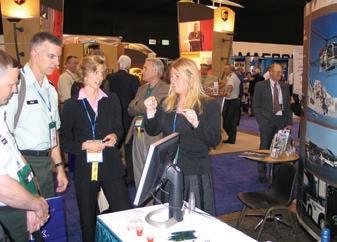

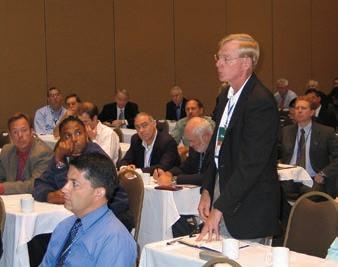

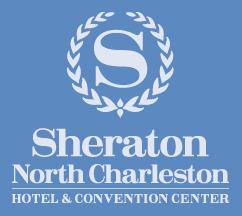

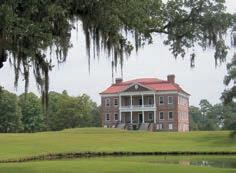


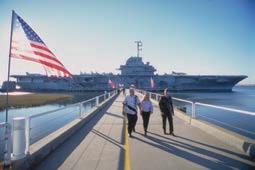


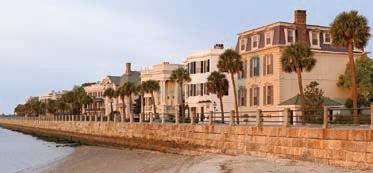




ECOL Denny Edwards, USA (Ret .)
If this column were being written for a Passenger Issue of the DTJ in the late 1940s, most of the stories would be about passenger trains and buses because that is the way the great majority of Americans traveled back then. Flying was a very expensive alternative for most, and still a novelty for many.
ver wonder what intercity travel was like in the United States 60 or 70 years ago? Whether it was a trip to Grandma’s house or a business trip from Chicago to New York City, if you were like most Americans you took the train. Buses were available for shorter trips, but the 1930s and ‘40s were the golden years of the American passenger train. If you were born after 1945 you pretty much missed it. But for our more senior NDTAers, names like the Broadway Limited, the Super Chief, and Empire Builder evoke pleasant memories of a bygone era—a less hurried time when getting there was half the fun of travel. To put it in an NDTA perspective, let’s say you are traveling from Chicago to New York City in November of 1947 to attend our second annual Forum. You are
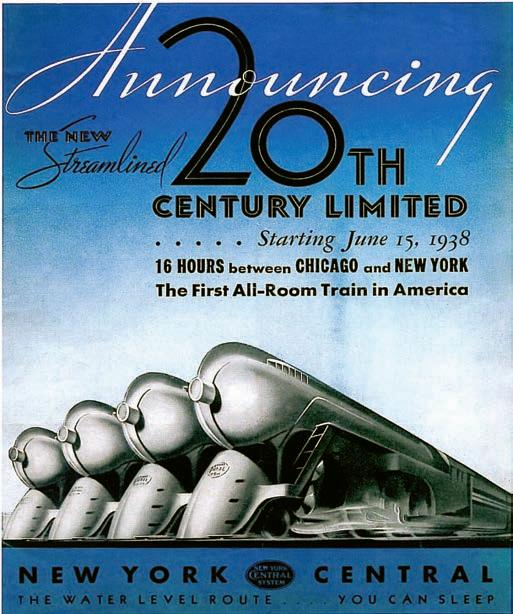
most likely aboard either the Pennsylva nia Railroad’s popular Broadway Limited or the New York Central’s plush 20th Century Limited for a “fast” 16-hour overnight trip. Arriving at Chicago’s La Salle Street Station in late afternoon you are escorted down a long red carpet to your private Pullman sleeping car. Right on time at 4pm, the mighty Hudson steam locomotive eases the train out of the station. Shortly, you head down to the lounge/bar car to relax before the first seating for dinner is called. In the comfortable lounge car, you meet other businessmen and several military officers who are also going to the Forum. Later as you enter the dining car you note that the tables are set with snowy white linens, gleaming silver, and real china. Two dining stewards attend to your every need as you enjoy a sumptuous meal while watching the miles speed by on the Central’s famed “Water Level Route.” You note that all of the delicious entrees are rather expensive—in the $3 to $4 dollar range! But then you are reminded that everything on the menu is prepared on board from the freshest ingredients, delivered to the train just minutes before departure.

your porter into an inviting full-sized bed for the evening. Before you retire, you leave your shoes in the “shine cabinet” so they can be cleaned, buffed, and returned to you in the morning.
After dinner, you join the many guests that retire to the lounge car for a night cap and perhaps a good cigar for the gentlemen. Early evening editions of Chicago and New York newspapers are available as well as closing stock quotes that have been wired to the train en route. Upon returning to your private Pullman compartment you find that it has been converted by
Upon awakening the next morning, you reserve an appointment at the onboard barbershop for a morning shave and a manicure, and then make your way to the dining car for a cooked-toorder breakfast. As you are lingering over your second cup of coffee, you marvel at how smooth the train ride is thanks to the meticulously maintained roadbed. And then right on the dot you arrive at Grand Central Station in New York City, where you catch a cab to the Hotel Pennsylvania, just in time to enjoy the opening ceremony of NDTA’s 2nd Annual Forum. DTJ
Editors Note: The golden days of these luxurious passenger trains has long since passed. But for those NDTAers wanting to sample the world of rail travel, Amtrak has direct service to Charleston, SC, (host city for our 2007 Forum) from many east coast cities. Next year’s Forum in Reno, NV, is also served by Amtrak.
HONOR ROLL OF SUSTAINING MEMBERS AND REGIONAL PATRONS
SUSTAINING MEMBERS
AAR Mobility Systems
ABF Freight System, Inc.
Air Transport Assn. of America
Air Transport International, LLC
AIT Worldwide Logistics, Inc.
All-State Express, Inc.
American Airlines
American Maritime Officers
American Public University System
American Road Line
American Trucking Associations
American United Logistics
ARINC
Arven Freight Forwarding, Inc.
Associated Global Systems
Astar Air Cargo, Inc.
ATA Airlines, Inc.
Baggett Transportation Co.
BNSF Railway Co.
Bender Shipbuilding and Repair Co., Inc.
Boyle Transportation
Cargo Transport Systems Co.
Carlson Hotels Worldwide
Carlson Wagonlit Travel/Sato Travel
CAST Transportation
C.H. Robinson Worldwide, Inc.
Chalich Trucking, Inc.
Chamber of Shipping of America
Computer Sciences Corp.
Comtech Mobile Datacom Corporation
Consolidated Safety Services, Inc.
CrossRoad Carriers
CRST International, Inc.
Crowley Maritime Corp.
REGIONAL PATRONS
AAAA Forwarding, Inc.
Access America Transport
Acme Truck Line, Inc.
Advantage Rent-A-Car
AHI Corporate Housing
AKA Washington, DC
American Moving & Storage Assn.
Argo Tracker
Association of American Railroads
Avis Budget Group
Bearing Inspection, Inc.
BEC Industries, LLC
The Cartwright Companies
Center for the Commercial Deployment of Transportation Technologies (CCDoTT)
Ceres Terminals, Inc.
Chassis King
C.L. Services, Inc.
C2 Freight Resources, Inc.
Delta Air Lines, Inc.
Dimensions International, Inc.
DynCorp International
Dynamics Research Corp.
Efficient Hauling Systems
LP dba EHS Industries
Enterprise Rent-A-Car
Europcar
Extended Stay Hotels
GE Aviation
General Dynamics/American Overseas Marine
GESeaCo America, LLC
Global Maritime & Trans. School-USMMA
Greatwide Dallas Mavis
Hapag-Lloyd USA
Intermodal Association of North America (IANA)
Intermarine, LLC
Integres Global Logistics
International Commodity Carriers, Inc.
International Longshoremen’s Association, AFL-CIO
Intl. Organization of Masters, Mates and Pilots
ITLT Solutions, Inc.
Interstate Distributor Co.
JDA, Inc.
KGL Transportation Co.
Kansas City Southern
Keystone Shipping Company
Knight Transportation
Liberty Maritime Corporation
LMI
Con-Way Truckload Services, Inc.
CSI Aviation Services, Inc.
Delaware River Maritime Enterprise Council
DHL Japan
Dollar Thrifty Automotive Group
Dovel Technologies, Inc.
Federated Software Group
FlightWorks
Fox Rent A Car
General Freight Services, Inc.
Great American Lines, Inc.
Green Valley Transportation Corp.
Hawthorne Suites – Alexandria, VA
Hilton Hotels Corporation
The Howland Group, Inc.
HudsonMann, Inc.
Hyatt Hotels and Resorts
Innovative Logistics Techniques, Inc. (INNOLOG)
Lockheed Martin Aeronautics Co.
Luxury Air Jets
M2 Transport
MacGREGOR (USA) Inc.
Matson Navigation Co., Inc.
Mayflower Transit
McCollister’s Transportation Systems, Inc.
MEBA
Menlo Worldwide
Mercer Transportation Co.
Mi-Jack Products
Mobility Resource Associates
National – Alamo (Vanguard Car Rental USA, Inc.)
National Air Carrier Assn., Inc.
National Van Lines
NCL America, Inc.
Norfolk Southern Corporation
North Carolina State Ports Authority
Northwest Airlines
NYK Logistics Americas
Ocean Shipholdings, Inc.
Old Dominion Freight Line, Inc.
Omni Air International, Inc.
OSG Ship Management, Inc.
Pacer Transport
The Pasha Group
Pilot Air Freight Services
Port of Beaumont
Port of Oakland
Powersource Transportation, Inc.
Pratt & Whitney
PRTM Management Consultants, LLC
Priority Solutions International
ITW Shippers
JAS Forwarding (USA), Inc.
Kalitta Charters, LLC
Labelmaster Software
Liberty Global Logistics LLC
Logistics Management Resources, Inc.
LTD Hotel Management Co.
Maersk K.K.
MCR Federal, LLC (MCR)
MTC Technologies
MBA | Morten Beyer & Agnew
MilitaryAvenue.com
Motorola
NCI Information Systems, Inc.
Oakwood Corporate Worldwide
ODIN Technologies
Omega World Travel
Panther Expedited Services (formerly, Panther II Transportation)
QTI/Crossland Carriers & Logistics & Modular Support
Raith Engineering
Sabre Travel Network
Savi Technology
Sealed Air Corp.
Sealift, Inc.
Seafarers Int’l Union of N.A. AGLIWD
Sea Star Line, LLC
SkyBitz, Inc.
Southwest Airlines
SRA International, Inc.
Stanley, Inc.
SSA Marine
Team Worldwide
Teco Ocean Shipping
Total Quality Logistics
Totem Ocean Trailer Express, Inc.
Transportation Institute
Transportation Intermediaries Assn. (TIA)
TransSystems Corporation
TRI-STATE Expedited Service, Inc.
Tri-State Motor Transit, Co., (TSMT)
TTX Company
Tucker Company
Union Pacific Railroad
United Airlines
United Parcel Service
United Van Lines, Inc.
UTi, United States, Inc.
VT Halter Marine, Inc.
Waterman Steamship Corp./ Central Gulf Lines
Whitney, Bradley & Brown, Inc.
XIO Strategies, Inc.
Patriot Contract Services, LLC
Payless Car Rental
Philadelphia Regional Port Authority
PowerTrack, US Bank
Project ACTA
Quality Support, Inc.
Seabridge, Inc.
Sea Box, Inc.
SkyLink – (USA)
Trailer Bridge, Inc.
Trailways Transportation System
Trans Global Logistics Europe GmbH
Truva International Transportation & Logistics
USMMA Alumni Foundation, Inc.
Utley, Inc.
The Virginian Suites
Veteran Enterprise Technology Services, LLC

American Shipping & Logistics Group (ASL) + PLUS
Choice Hotels International + PLUS
EGL, Inc. + PLUS
FedEx + PLUS
Horizon Lines, Inc. + PLUS
InterContinental Hotels Group + PLUS
Landstar System, Inc. + PLUS
National Air Cargo Group, Inc. + PLUS
World Air Holdings, Inc. + PLUS
YRC Worldwide + PLUS
Accenture
Agility Defense & Government Services
Alien Technology Corporation
American Roll-On Roll-Off Carrier, LLC
APL Limited
Atlas Air Worldwide Holdings
BAX Global
Benchmarking Partners
Bennett Motor Express
The Boeing Company
Booz Allen Hamilton
Bristol Associates
CorTrans Logistics, LLC
CSX Transportation
DHL
Evergreen International Airlines, Inc.
Gemini Air Cargo, Inc.
The Hertz Corporation
IBM
IntelliTrans, LLC
Kuehne + Nagel, Inc.
Lockheed Martin
Maersk Line, Limited
Marine Terminals Corporation (MTC)
Matson Integrated Logistics
Northrop Grumman Corporation
Odyssey Logistics & Technology Corporation
Port of Corpus Christi Authority
QUALCOMM
R&R Trucking
Ryder System, Inc.
SAP Public Services, Inc.
Science Applications International Corp. (SAIC)
UPS
UTXL, Inc.
Dr . Kent N . Gourdin
Global Airlines: Competition in a Transnational Industry
Global Airlines: Competition in a Transnational Industry, 3d edition, by Pat Hanlon, ISBN 0750664398, Published by Elsevier Science & Technology Books, February 2007, $49.95 list, paperback, 392p.
This work presents an updated overview of the changing scene in air transport, covering current issues such as security, no frills airlines, open skies agreements, the outcome of the recent downturn in economic activity, and the emergence of transnational airlines. It takes a forward looking view of these challenges for the industry. Specifically, topics include security, financial instability (in particular, the cyclical downturn
in economic activity that has led some airlines to the verge of bankruptcy), the need to attain global reach (with a focus on trans-border mergers, open skies agreements, and the transatlantic Common Aviation area), the impact of low-cost carriers and e-commerce on the structure of the industry, and issues relating to airport capacity issues and the associated environmental implications of dealing with them. Using up-to-date data and case studies from major international airlines such as United Airlines, British Airways, and Qantas among many others, Global Airlines provides a comprehensive insight into today’s global airline industry. (From the publisher) DTJ
continued from page 7
“Book As You Go” and “Flow Controller.” On the positive side, it is a great tool for improved travel management, financial reporting, and budgeting.
The purpose of this month’s column is to raise awareness about passenger travel issues among supervisors, managers, and organizational leaders. The nature of the industry is changing. Take advantage of the opportunities offered by the NDTA to learn about these changes—the PTSC Committee, professional session at the Forum in Charleston, the DTJ, and industry newsletters. Then share knowledge with those in the industry and stay current on those issues that directly impact your employees. Plan now to attend the Passenger Travel Services professional session during the Forum and get your questions answered.
And finally, continuing on a passenger note, this year for the first time an American flagged cruise line, Norwegian Cruise Line America, will be with us in the exhibit hall to present a luxurious cruise vacation to some lucky Grand Prize Drawing winner. Plan now to join us in Charleston, SC September 15-19, 2007.
Thank you for the great support of our nation. Thank you for your confidence in the Association and the daily contributions each of you make to ensure our success. DTJ

